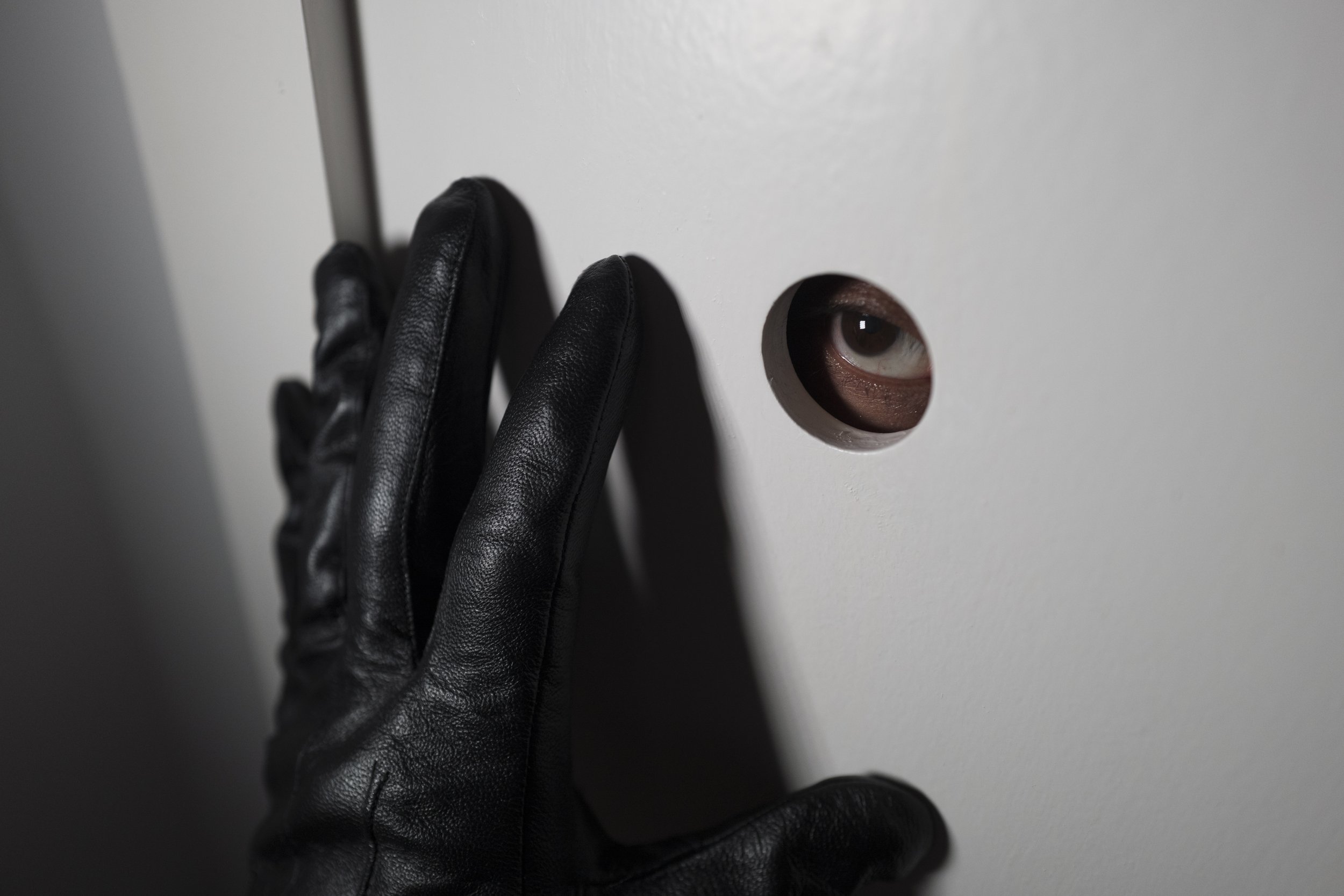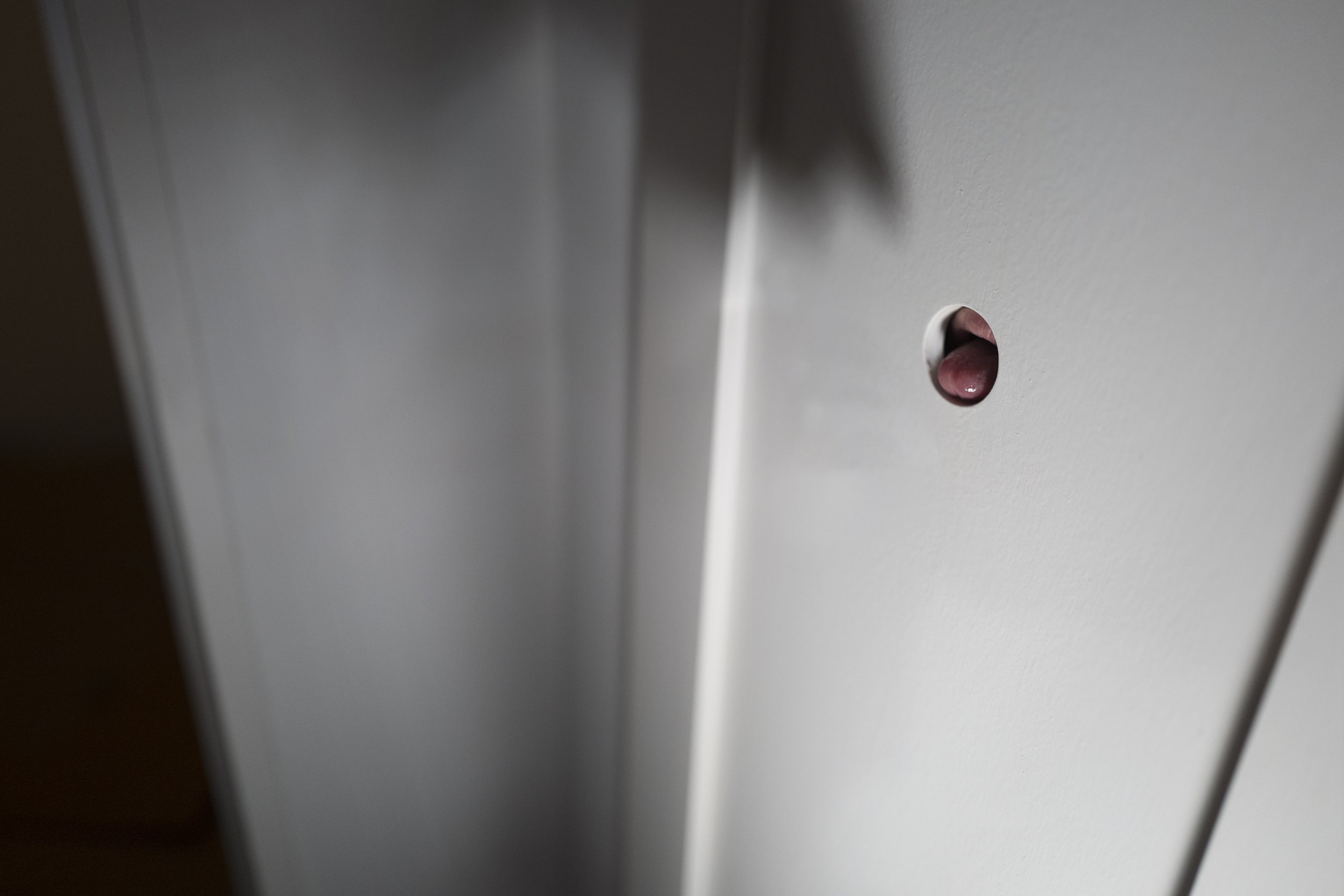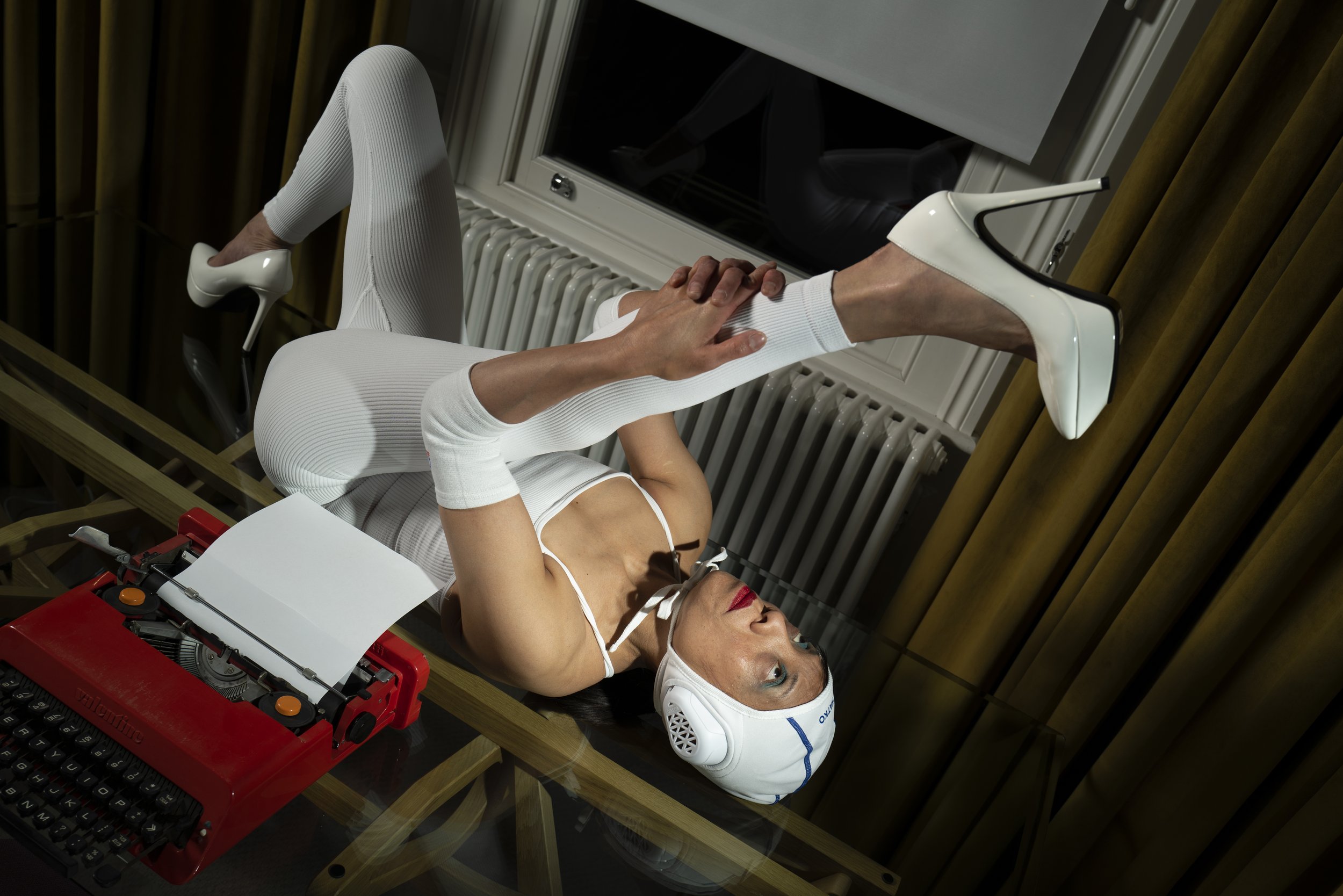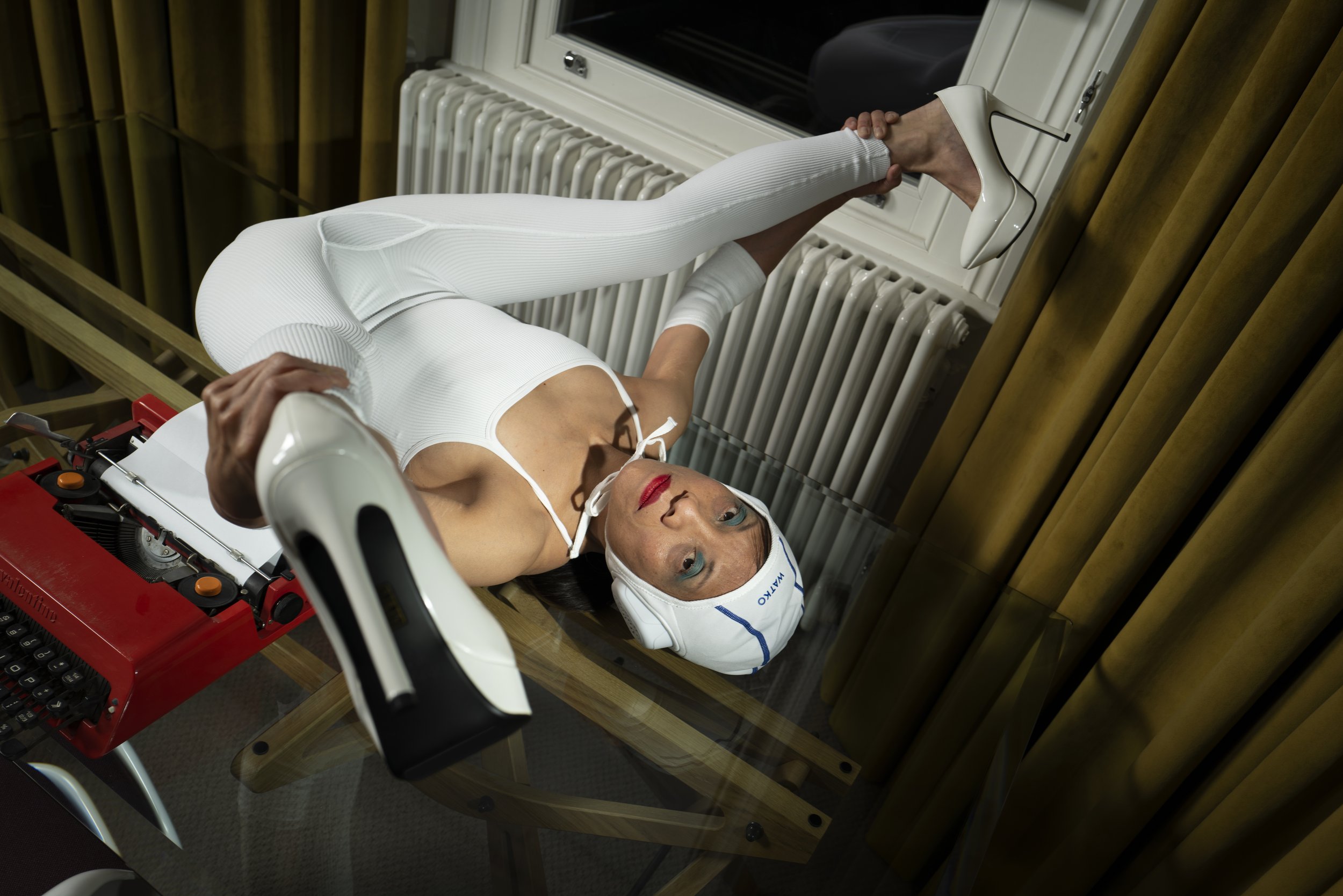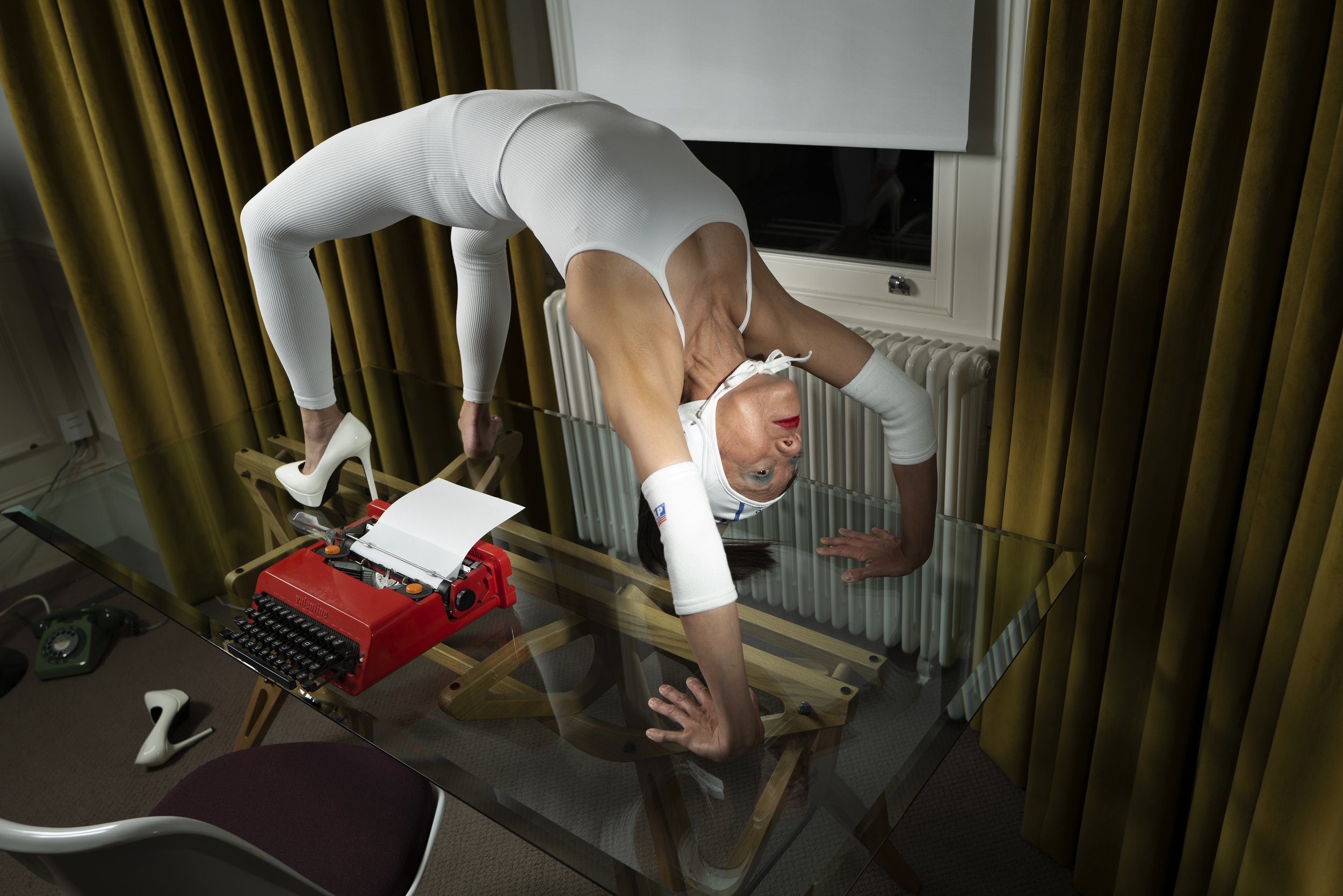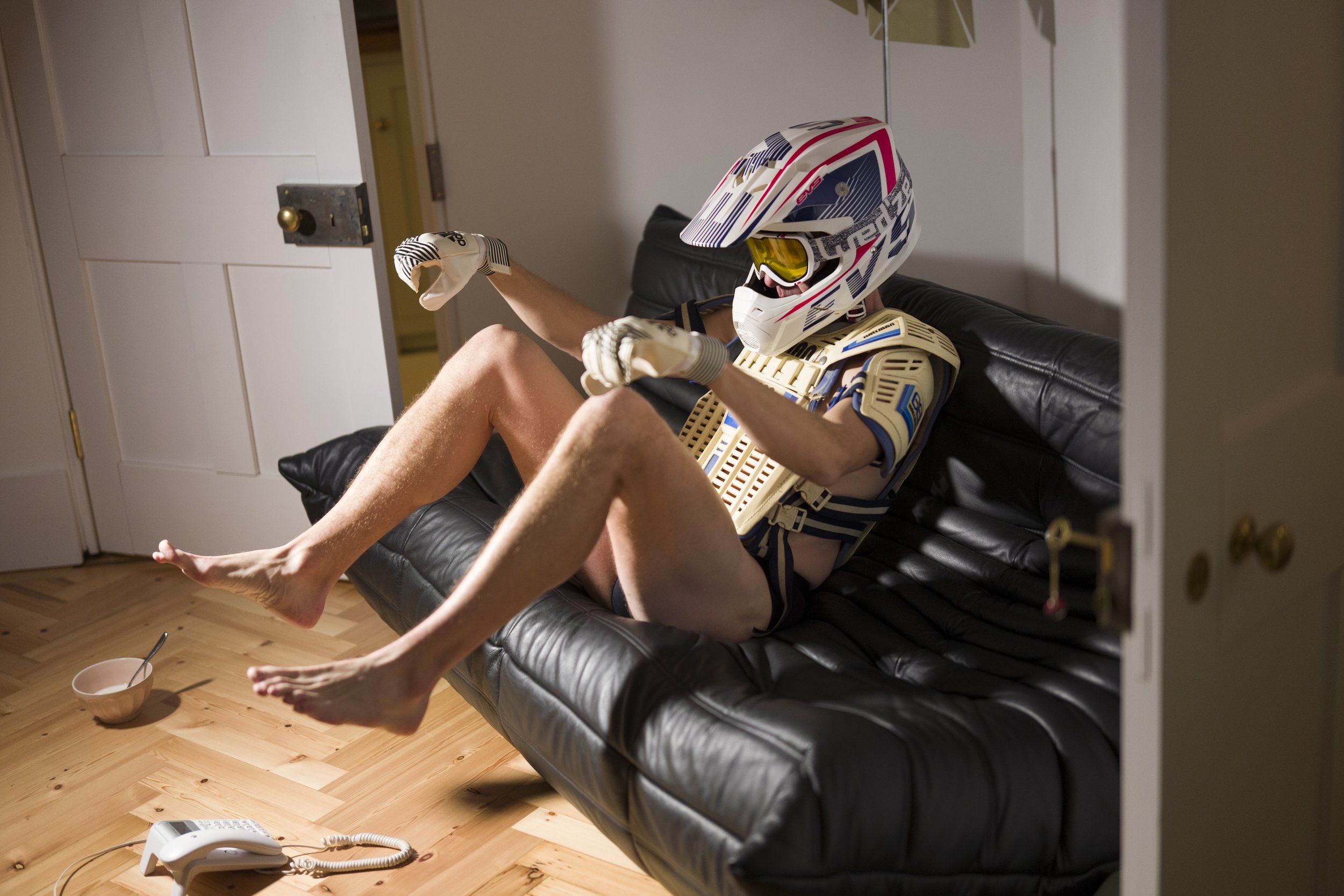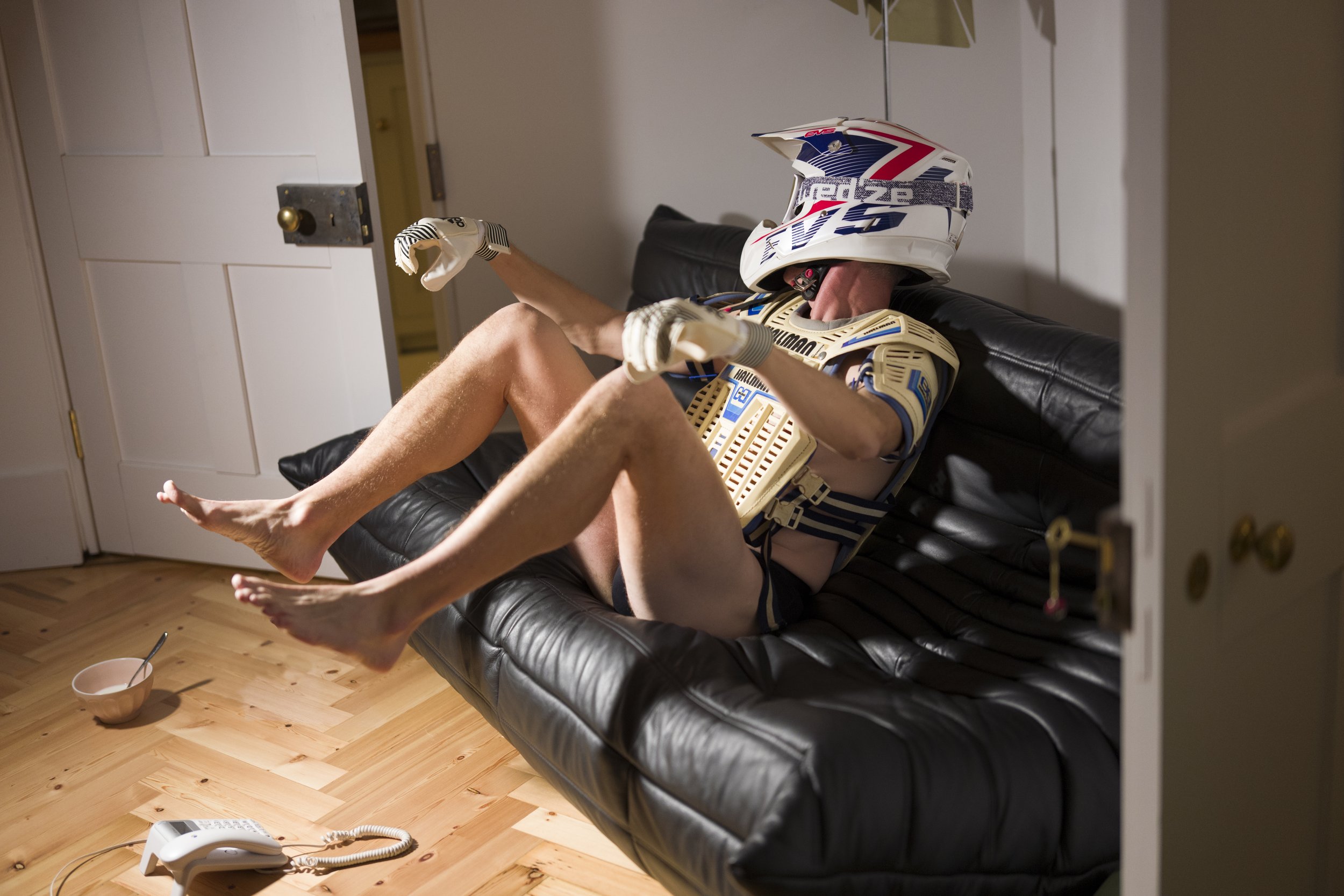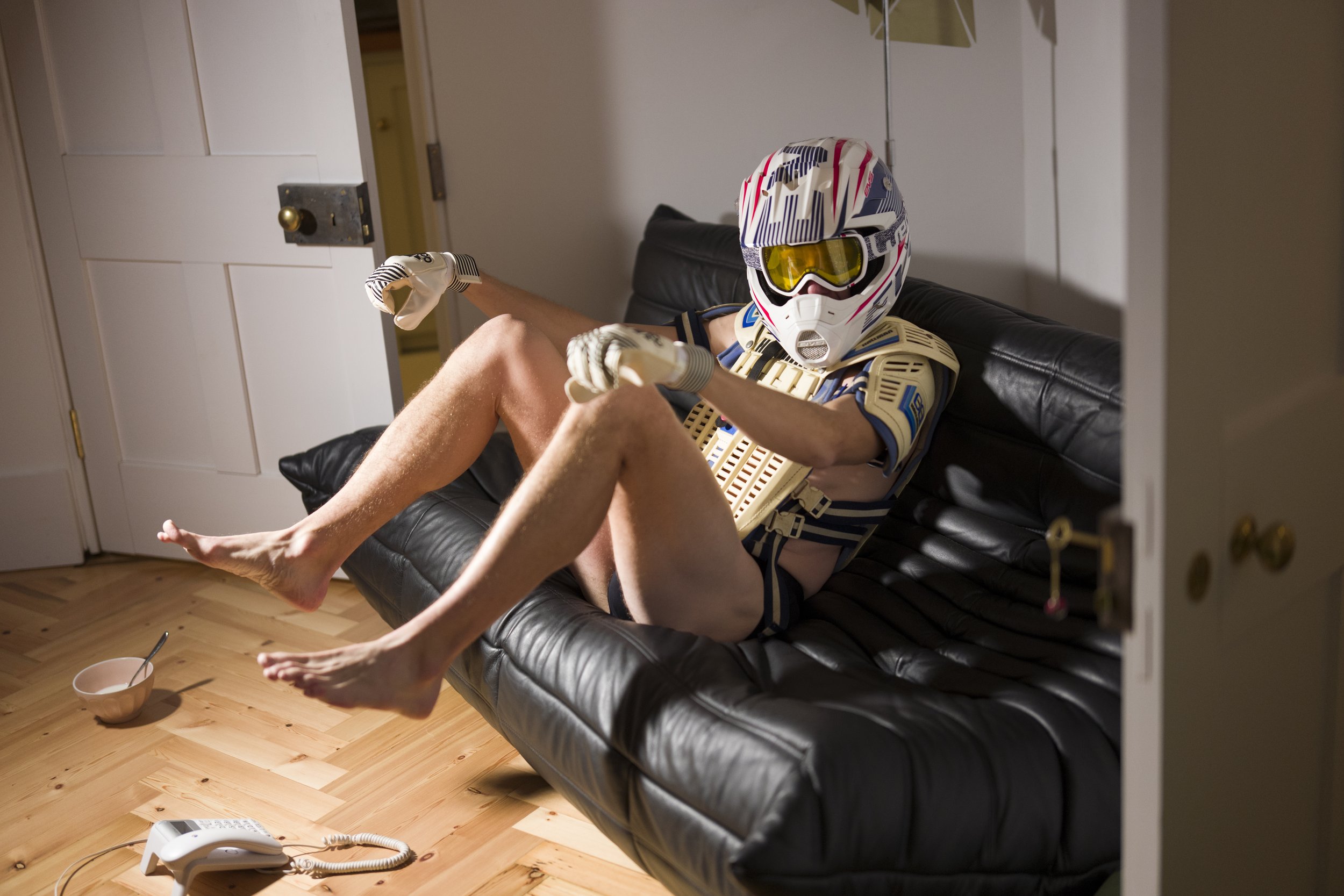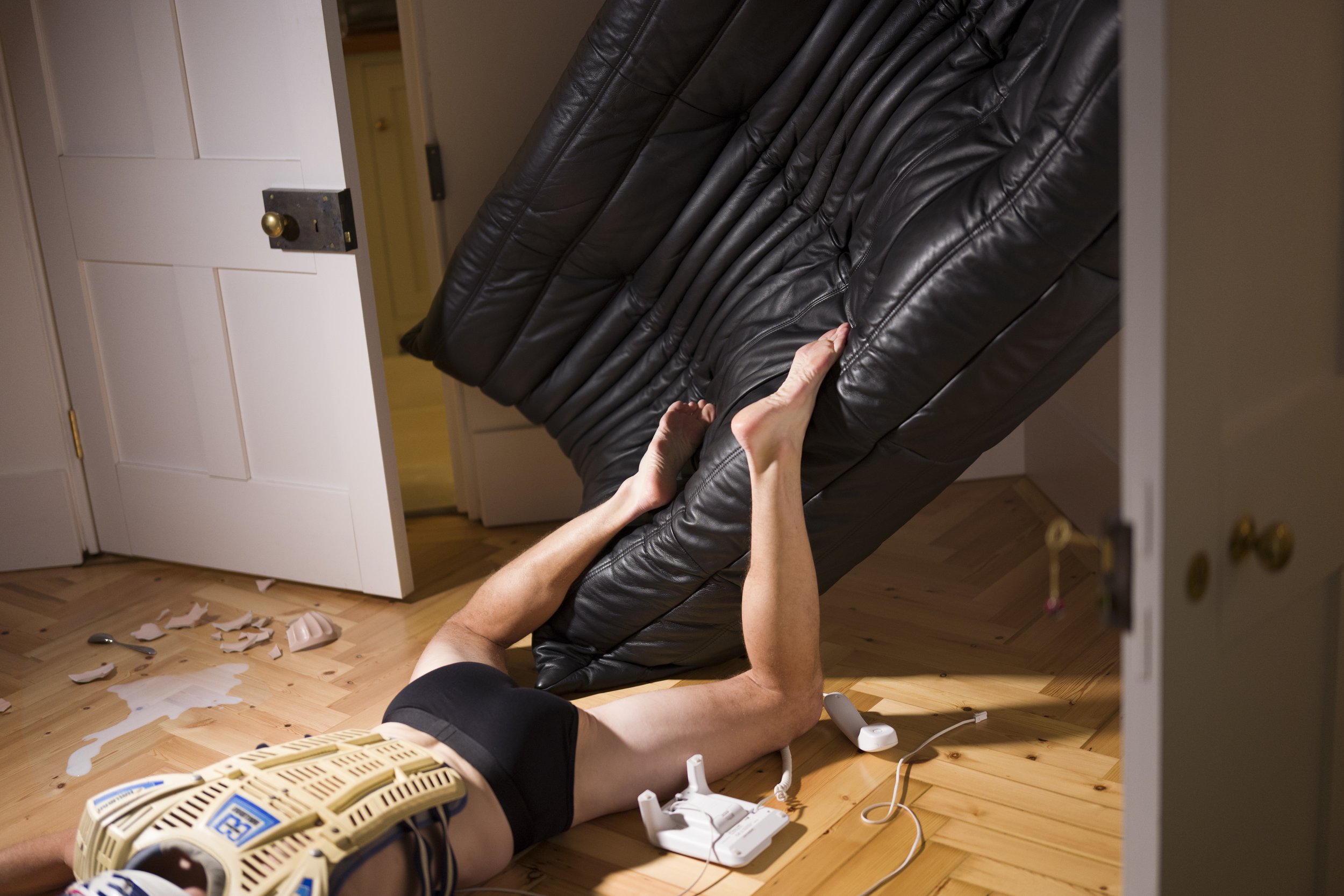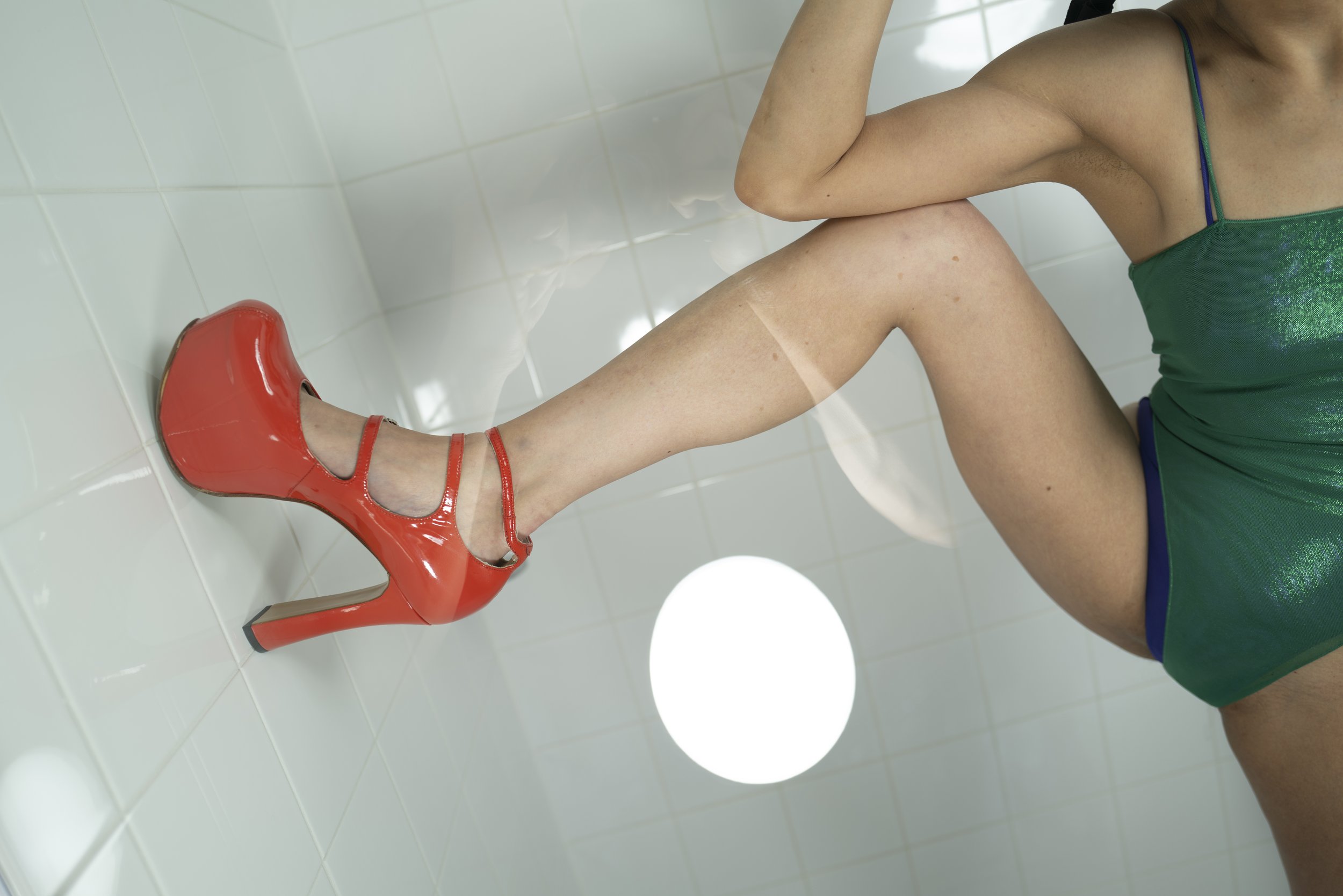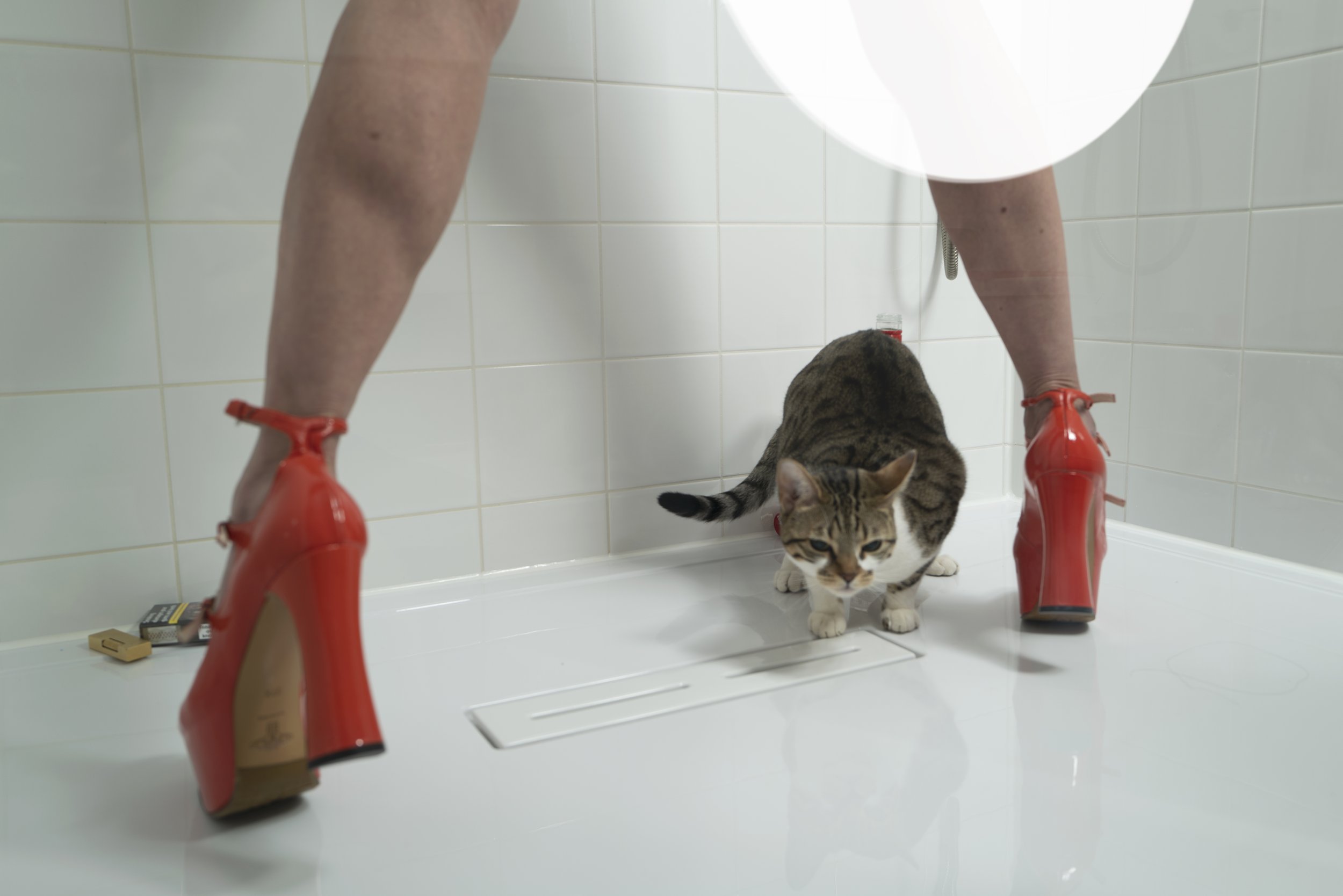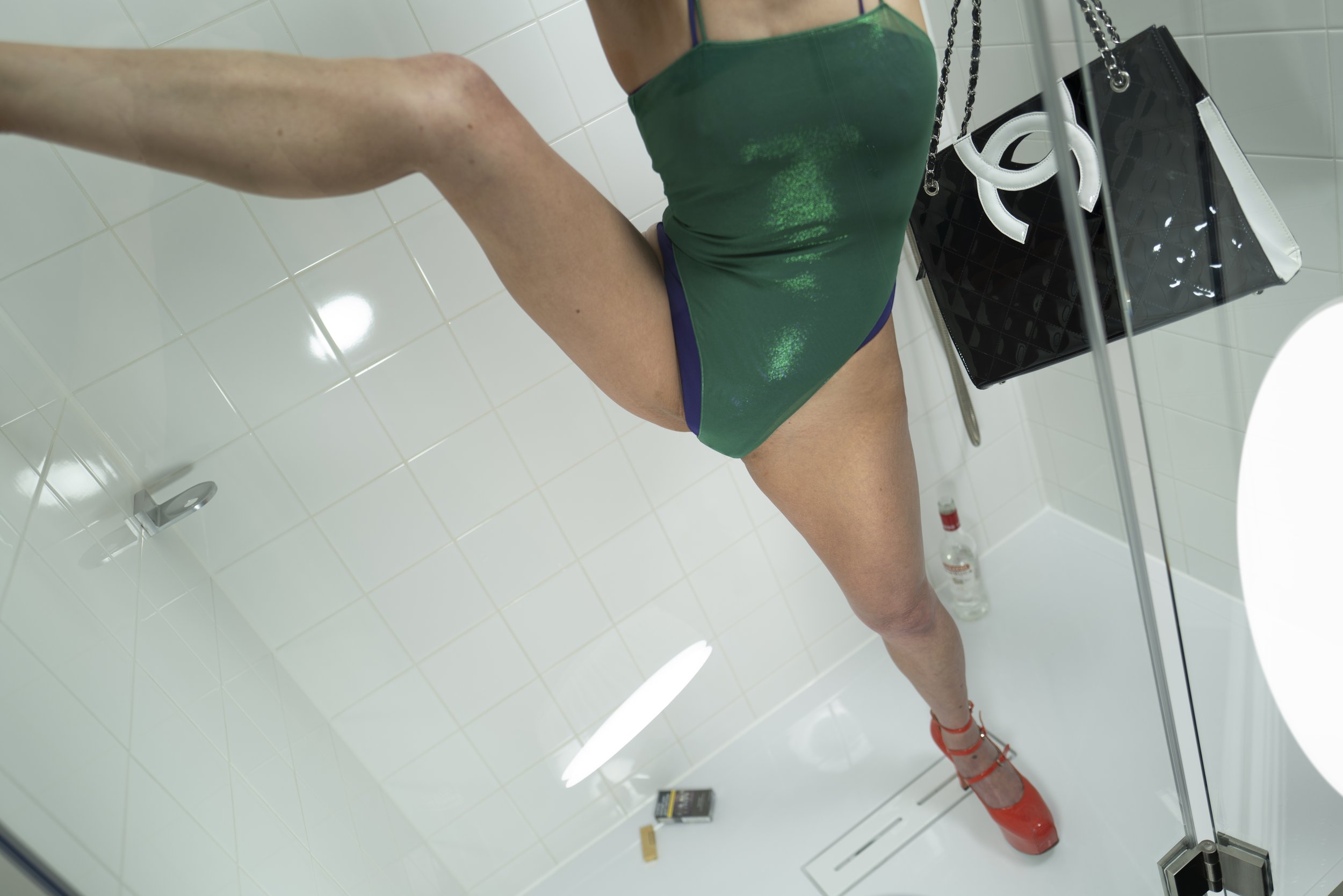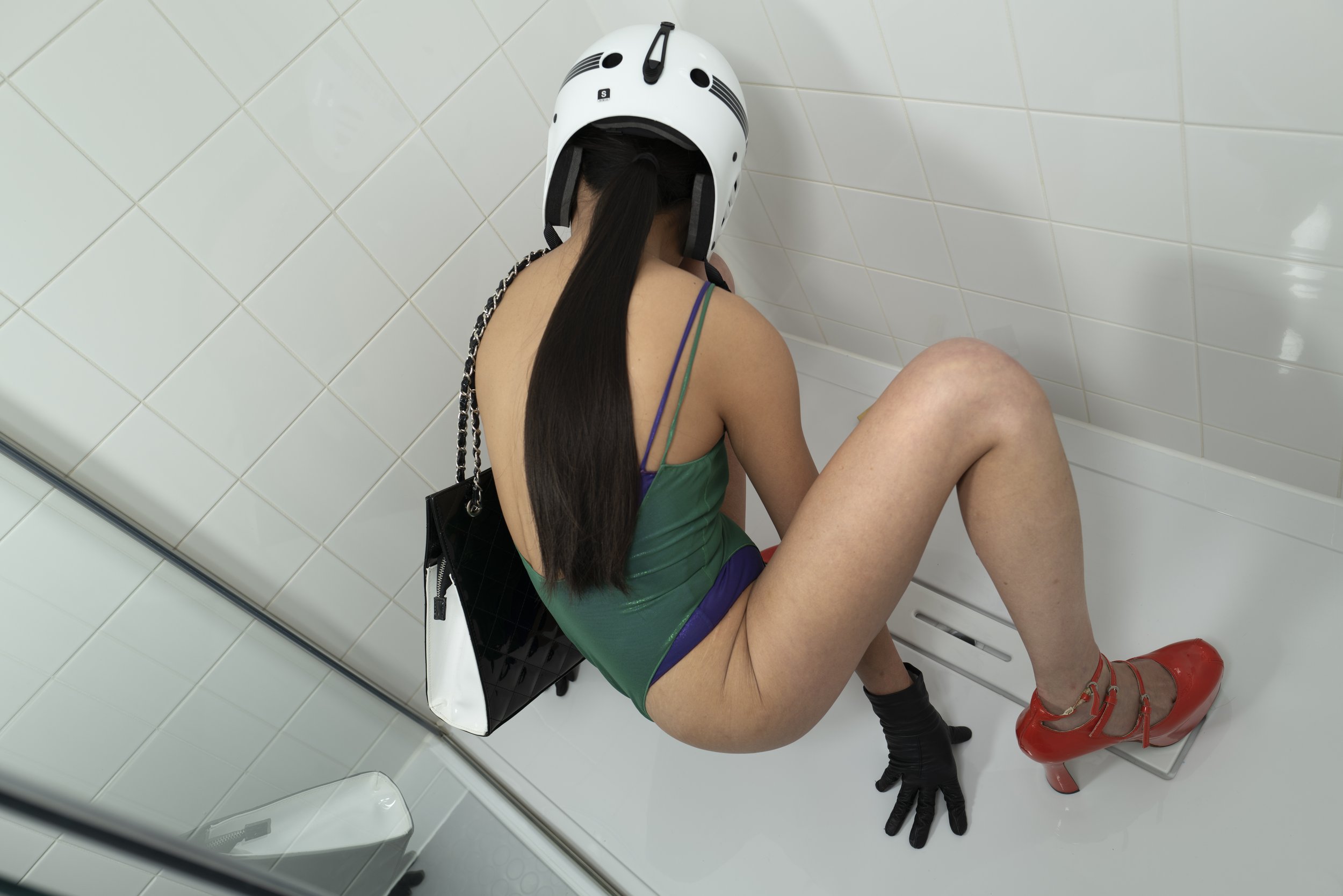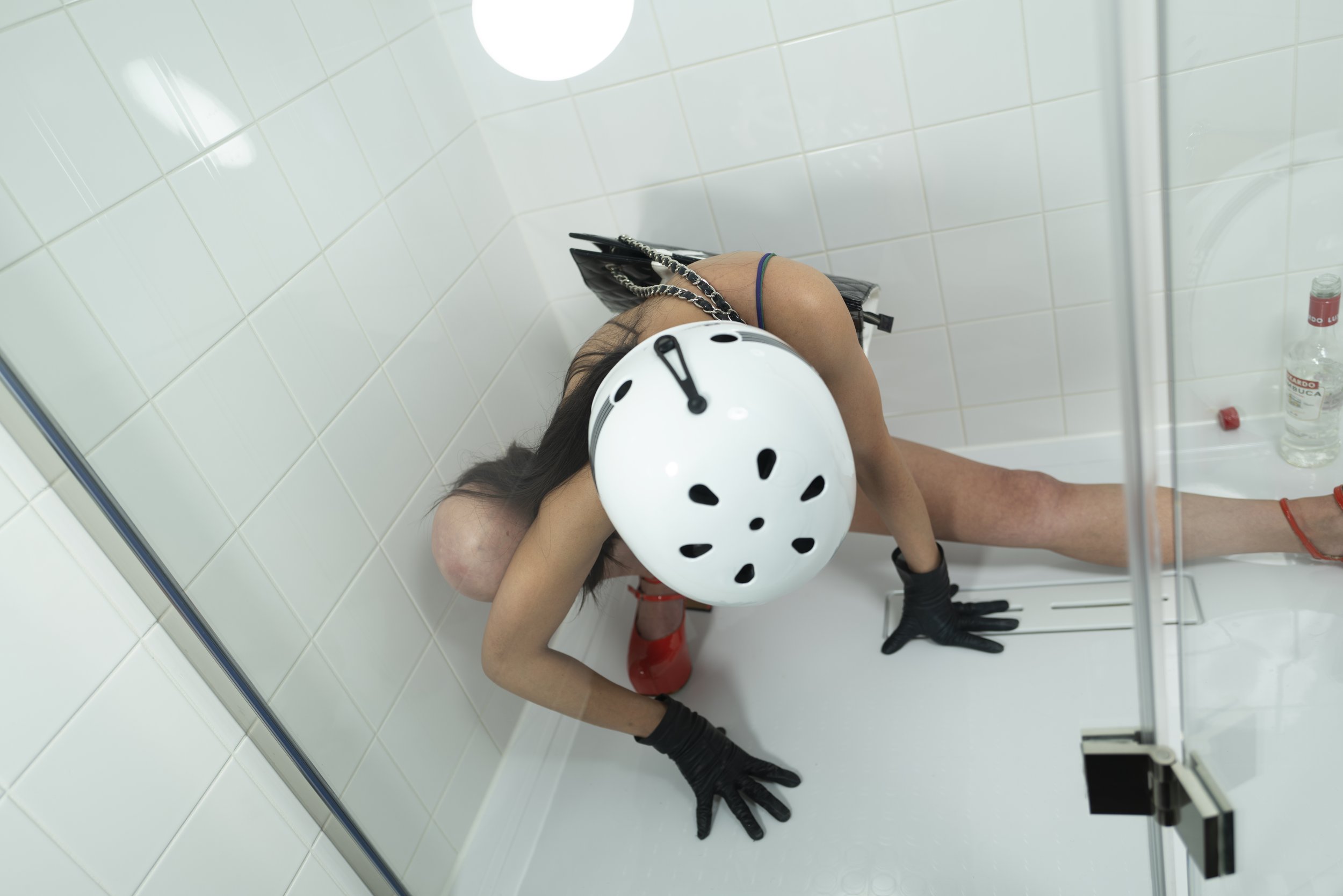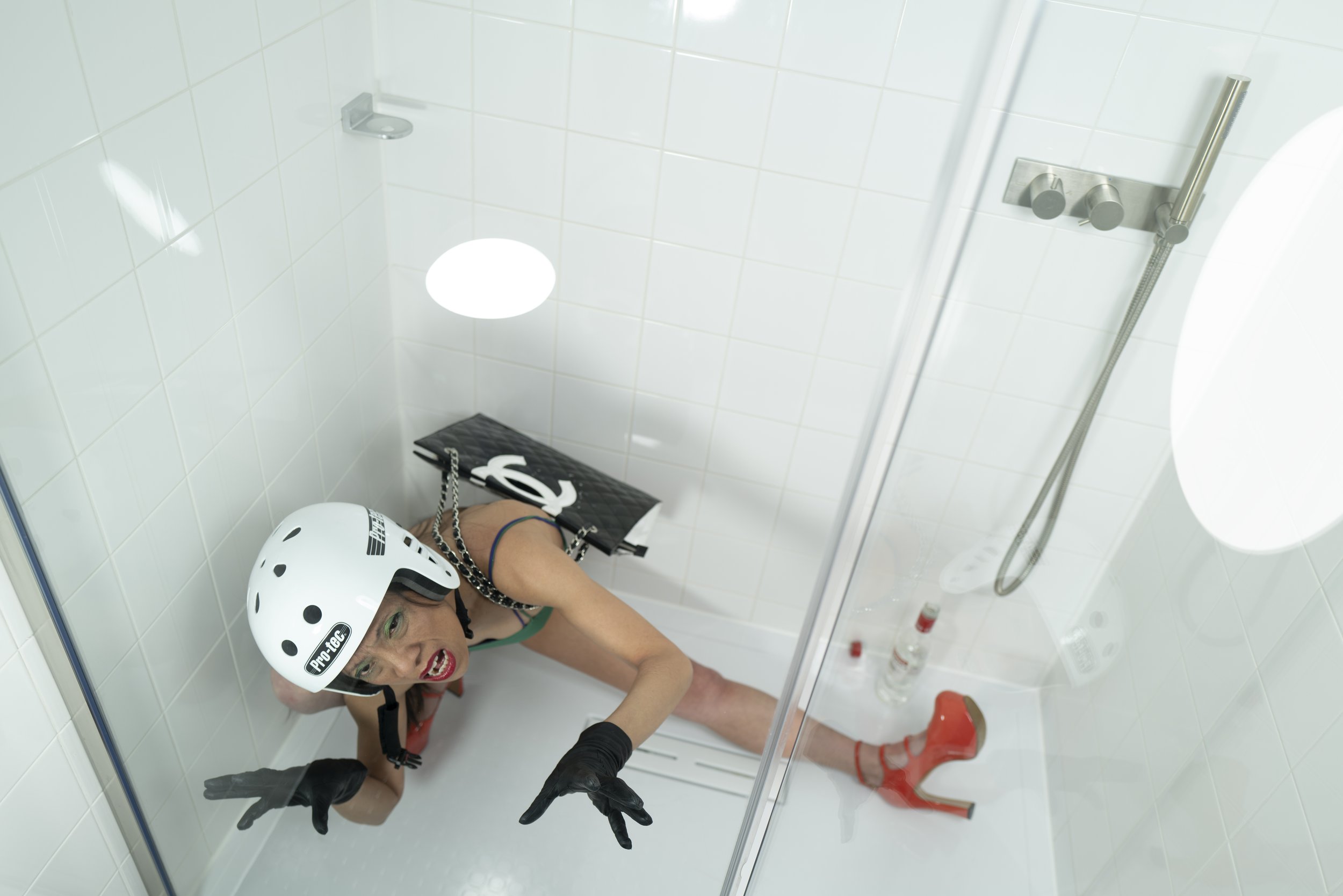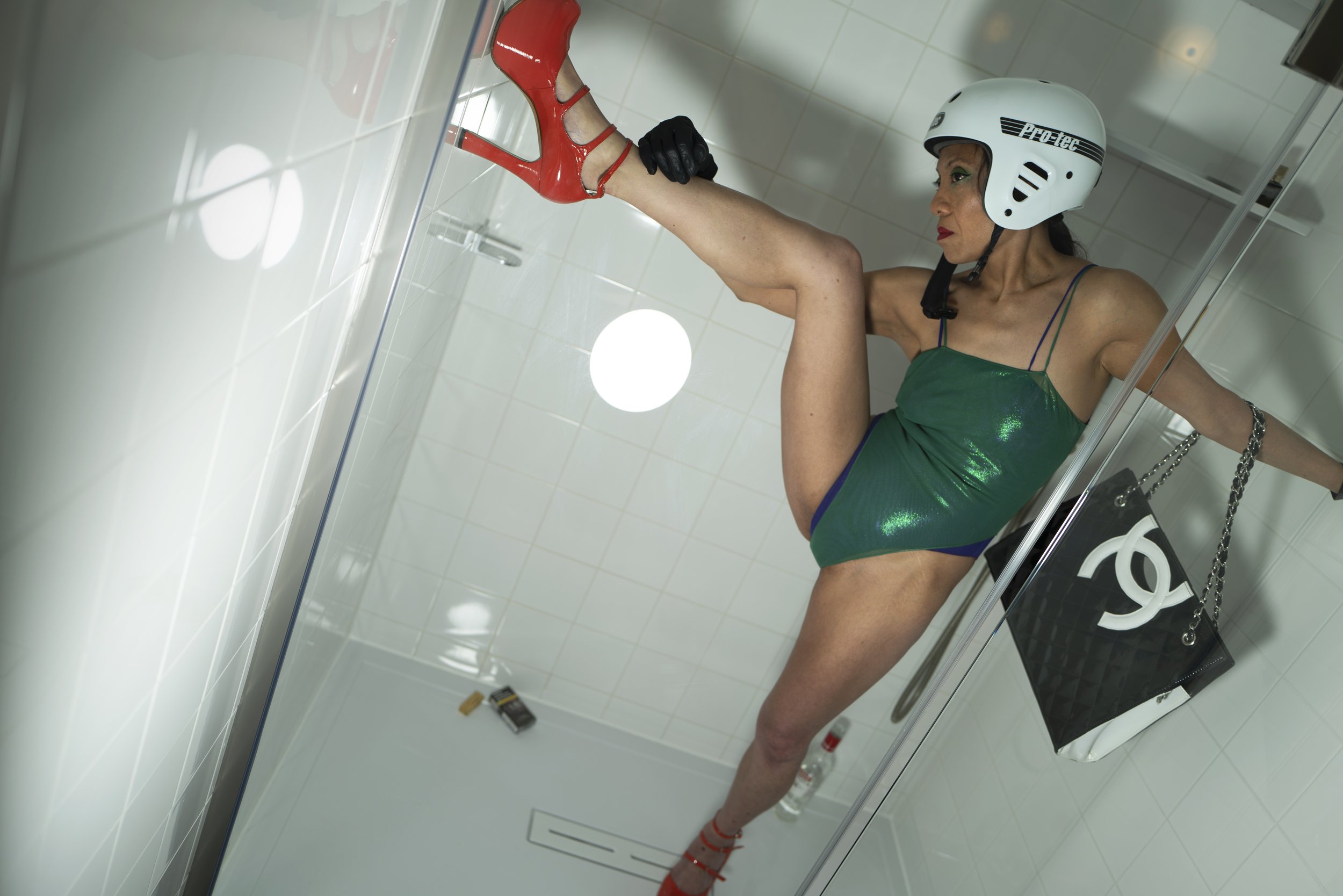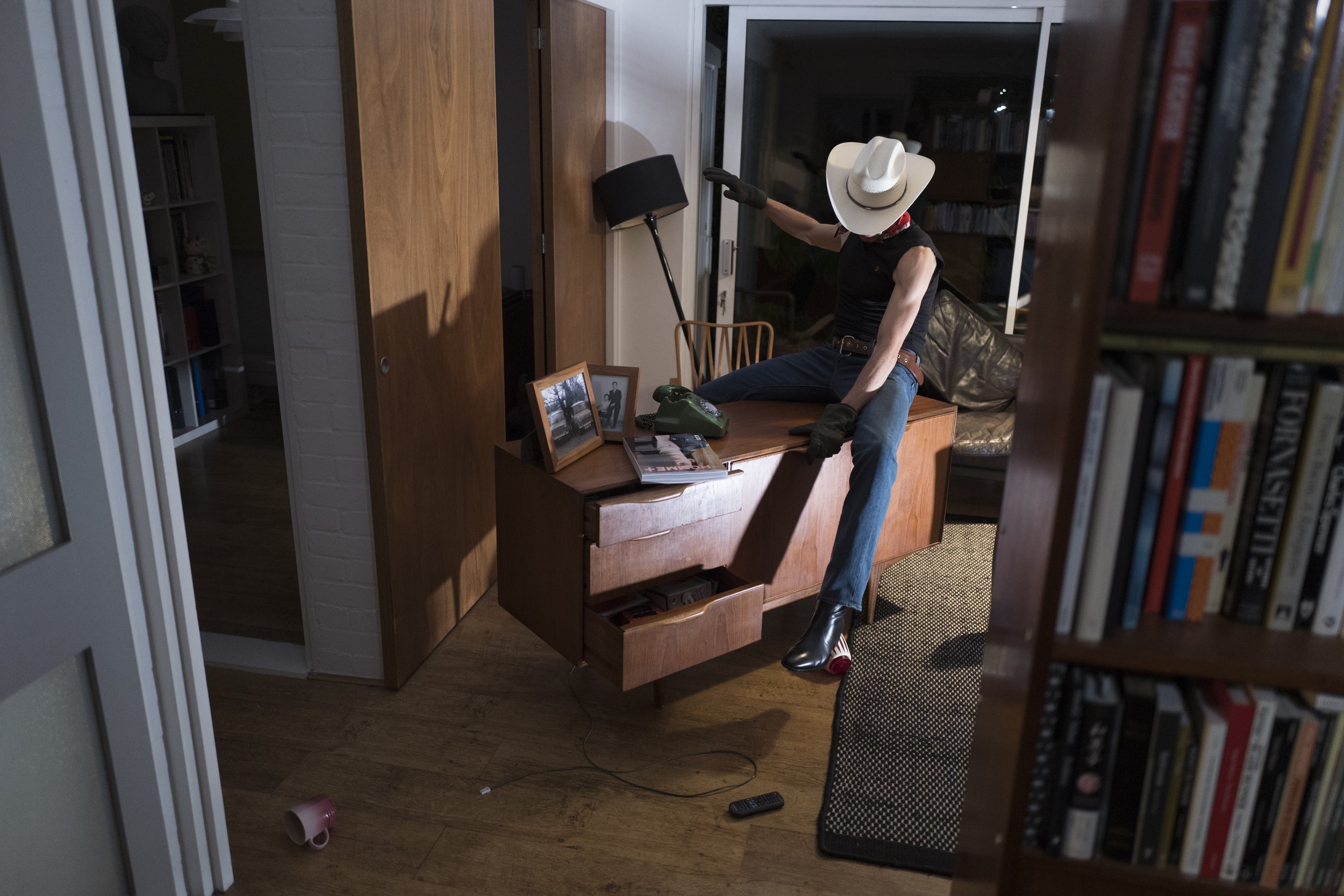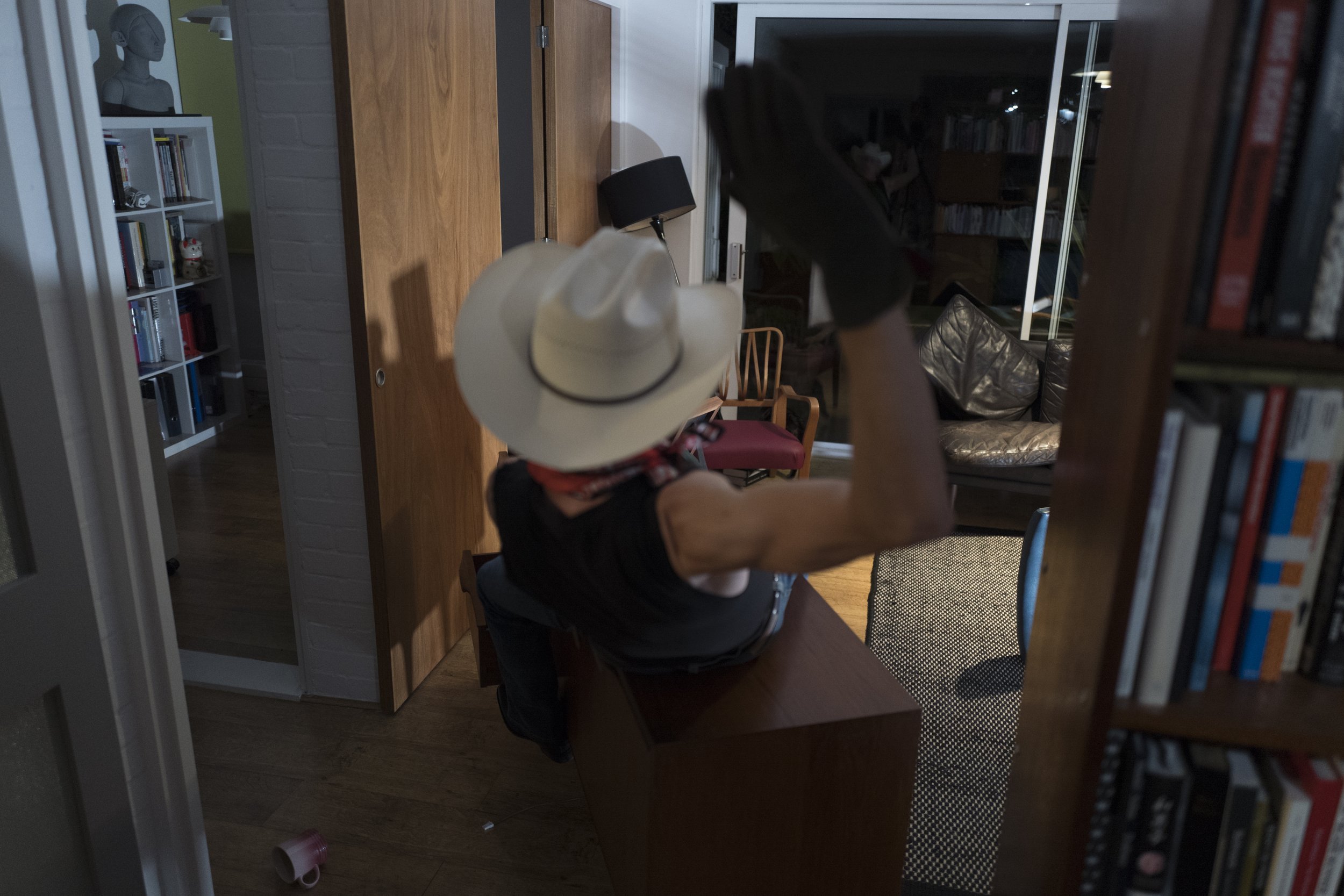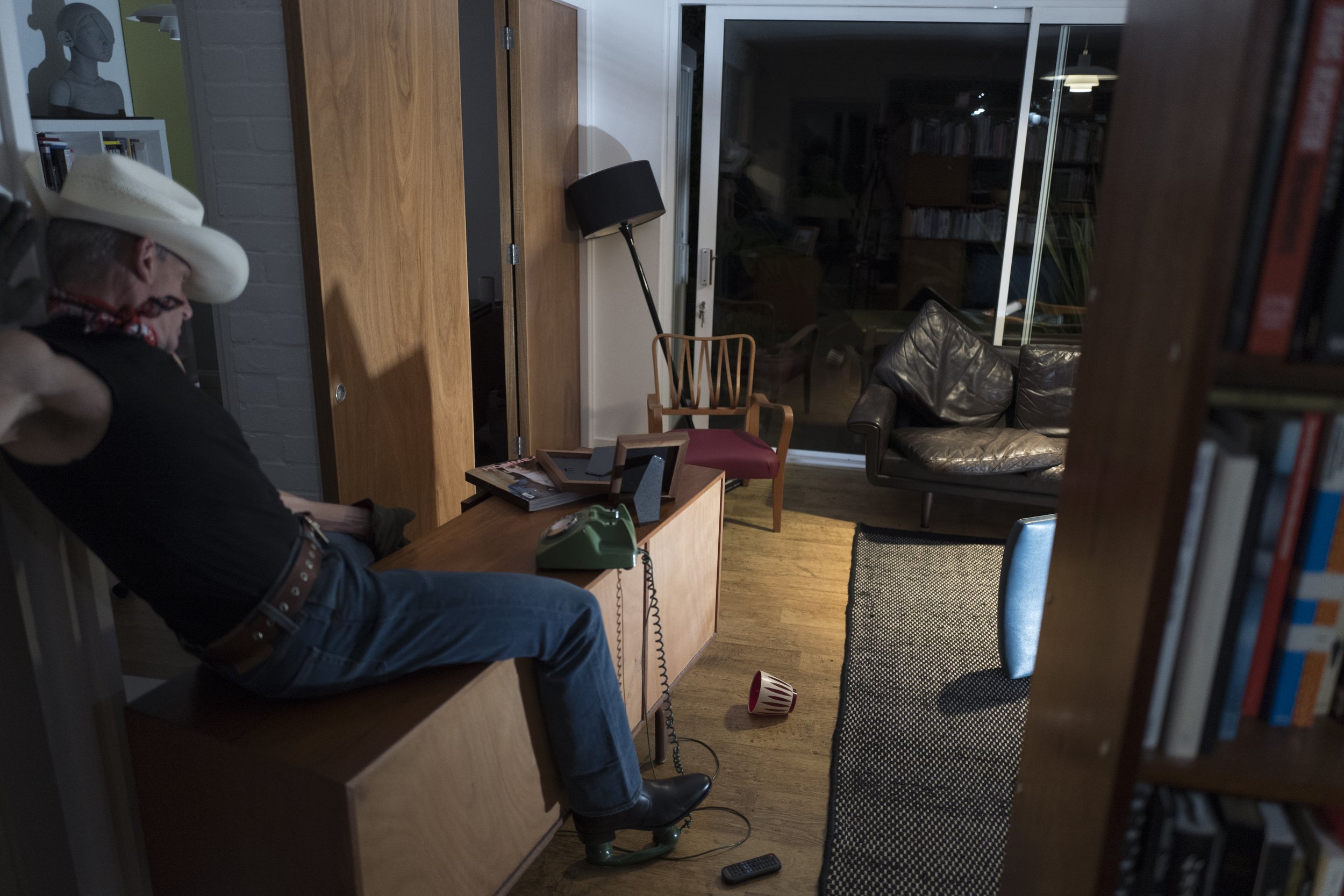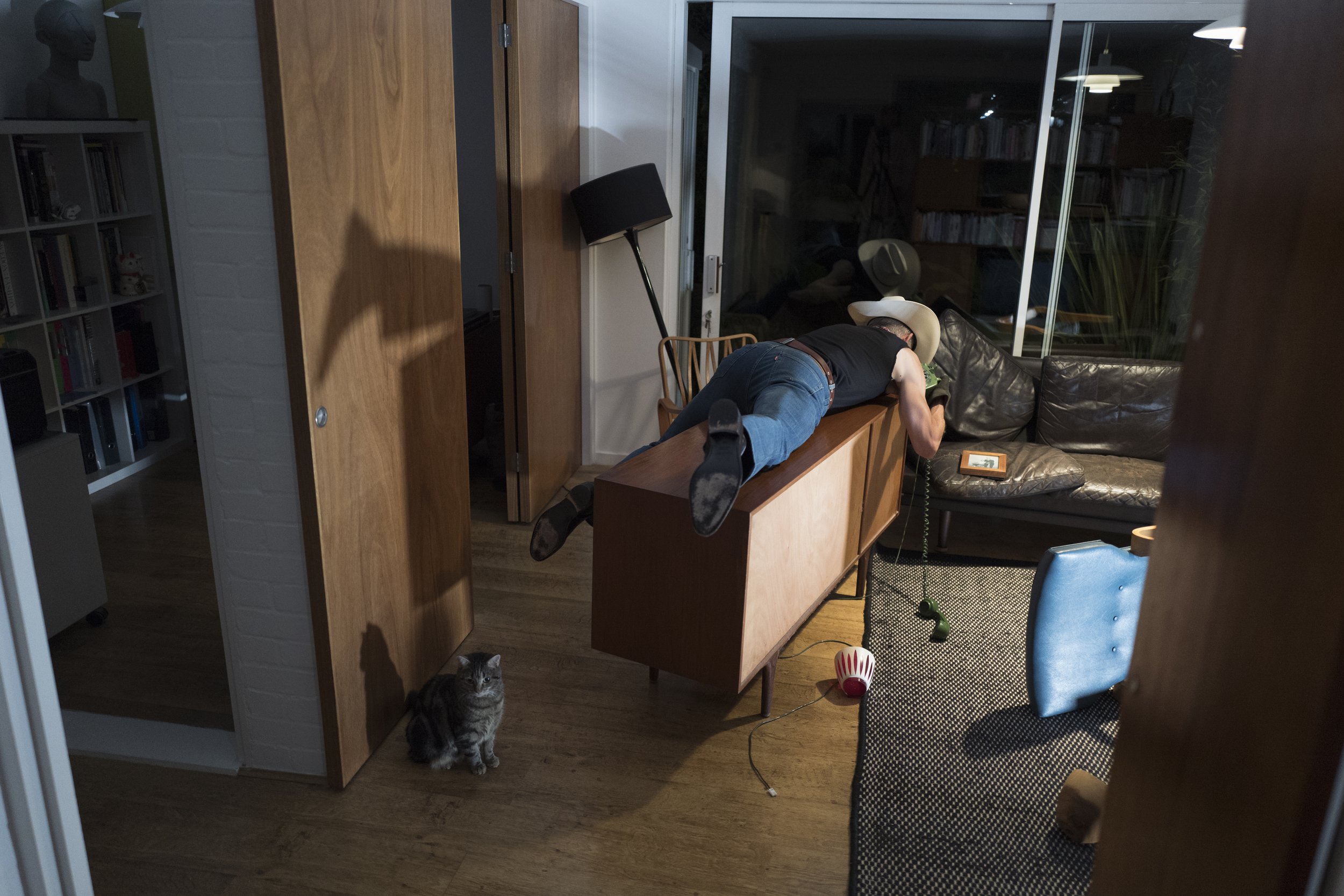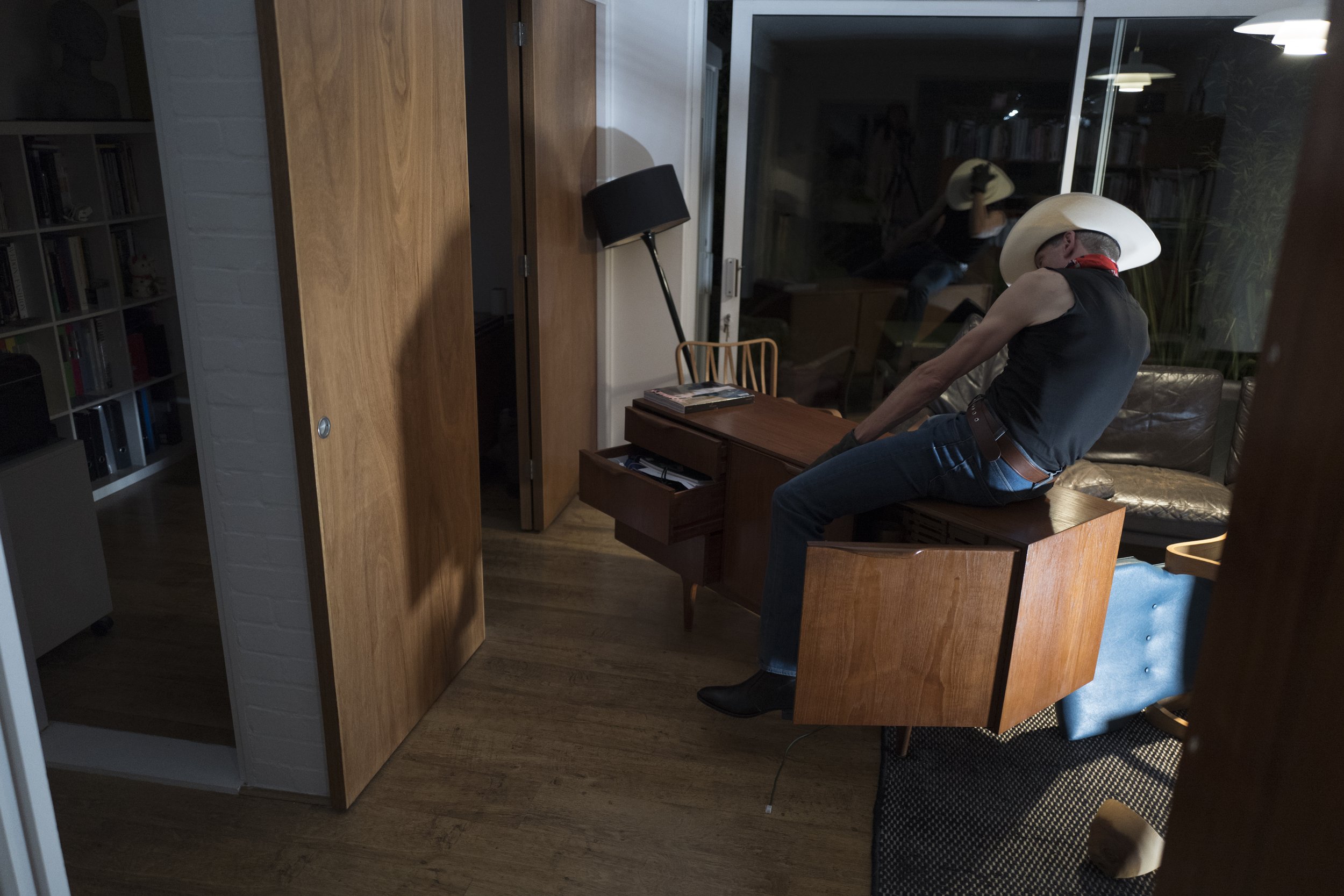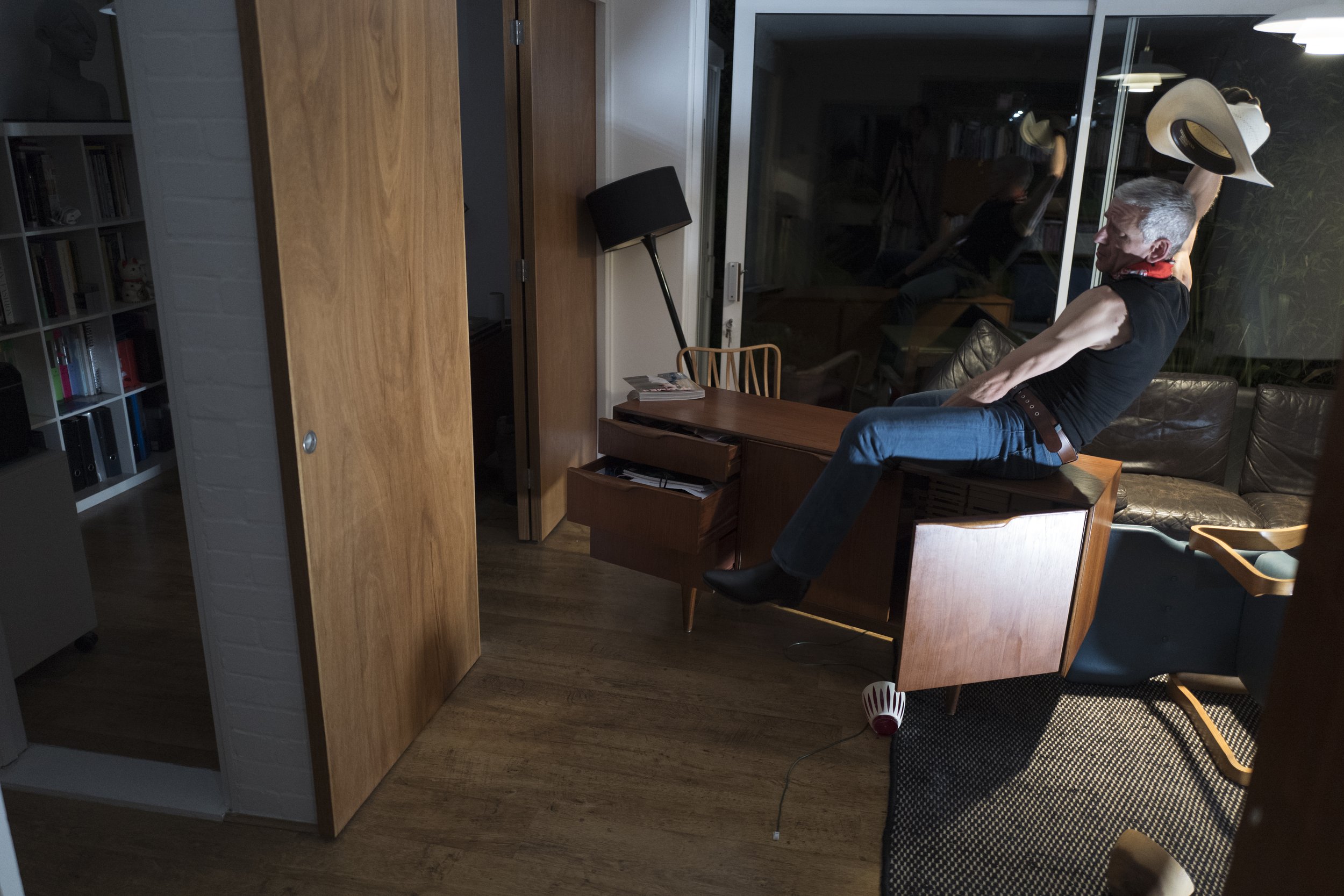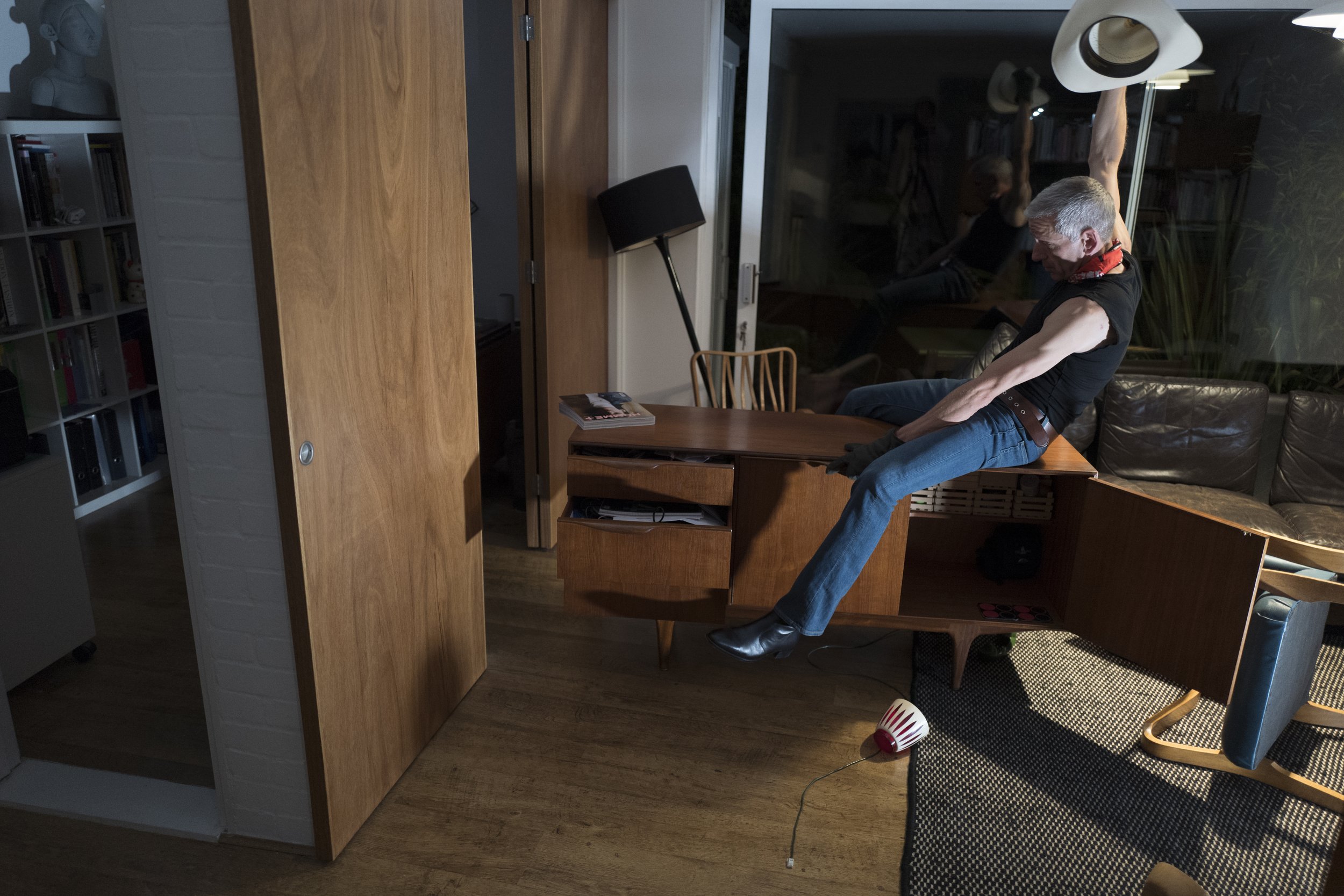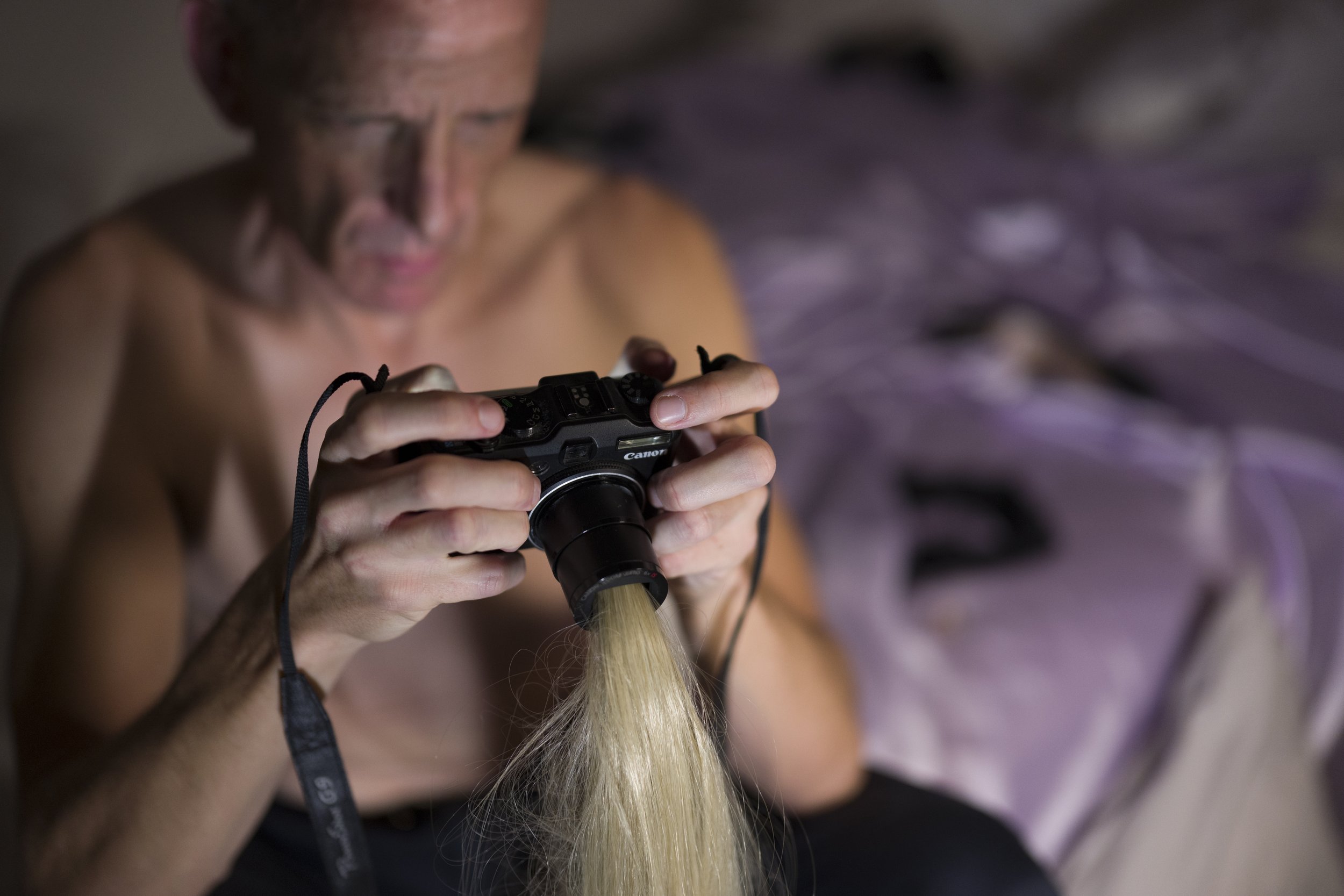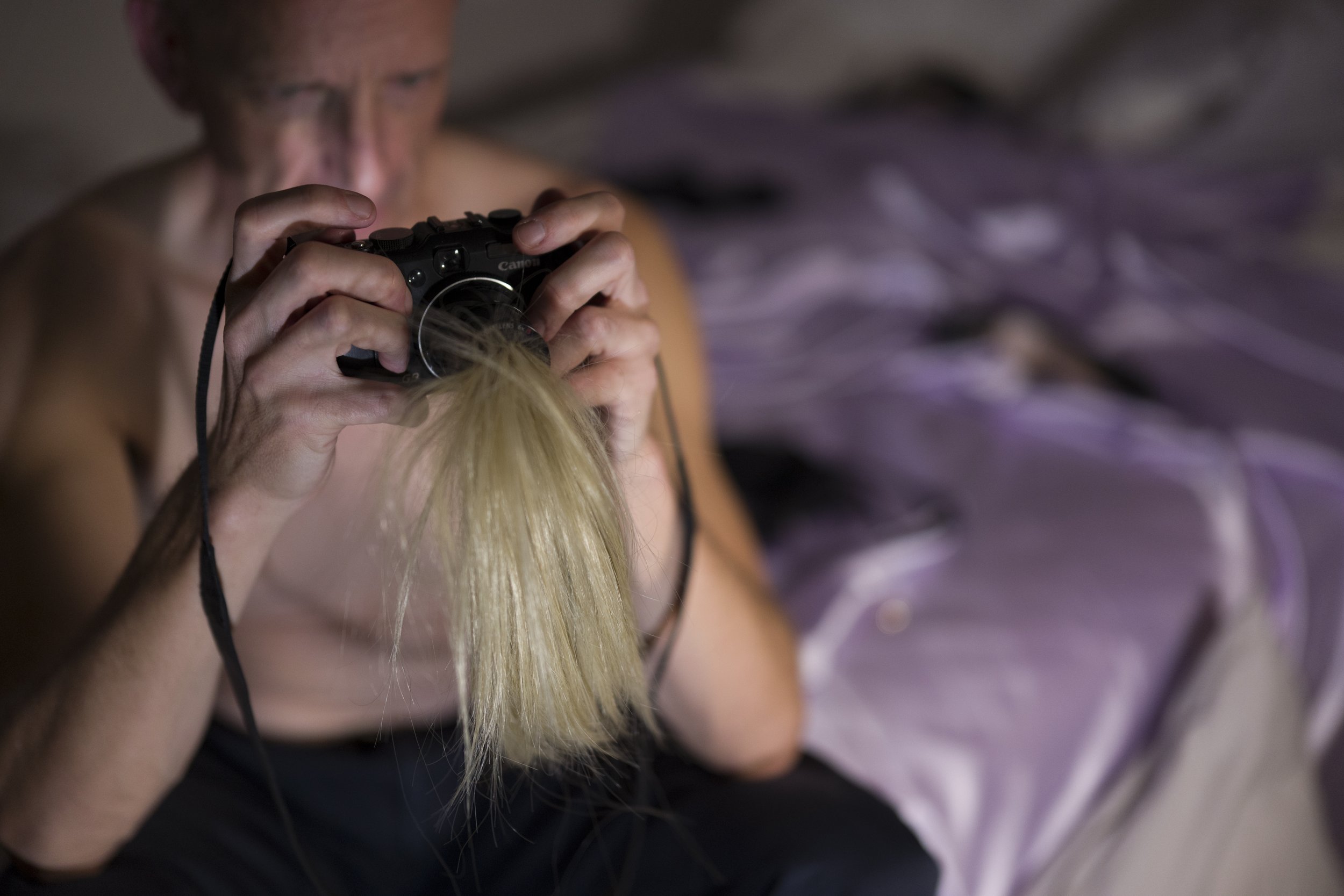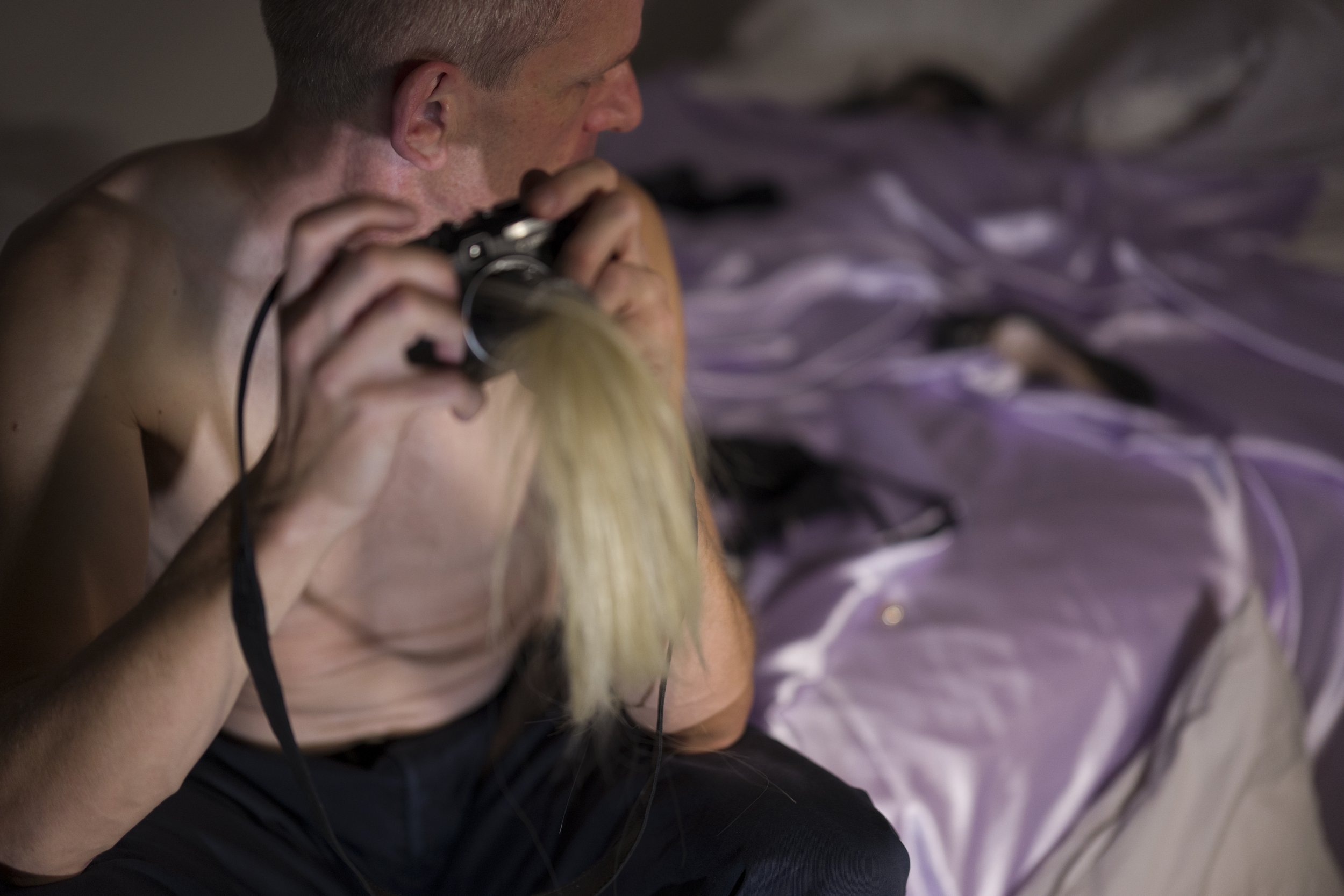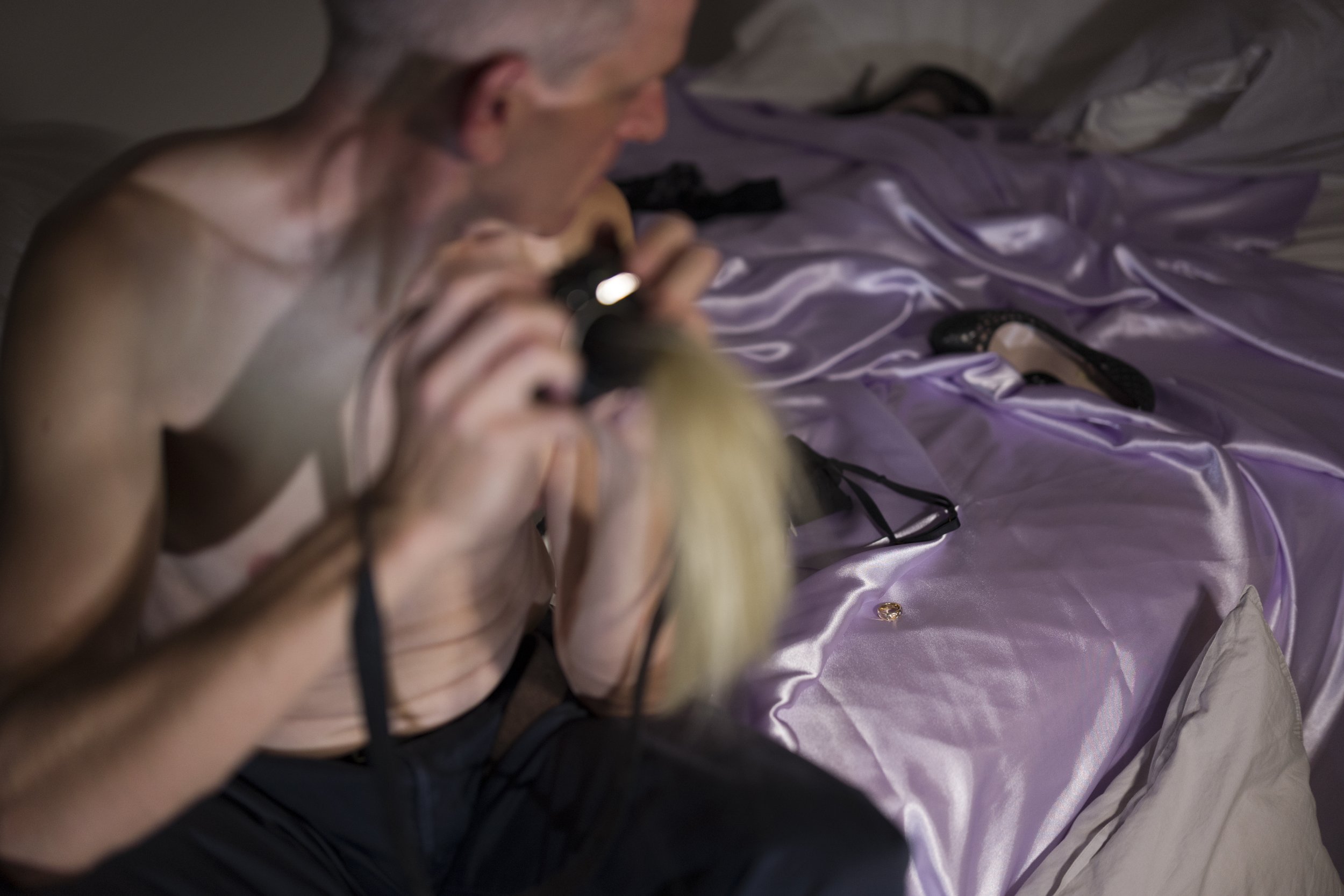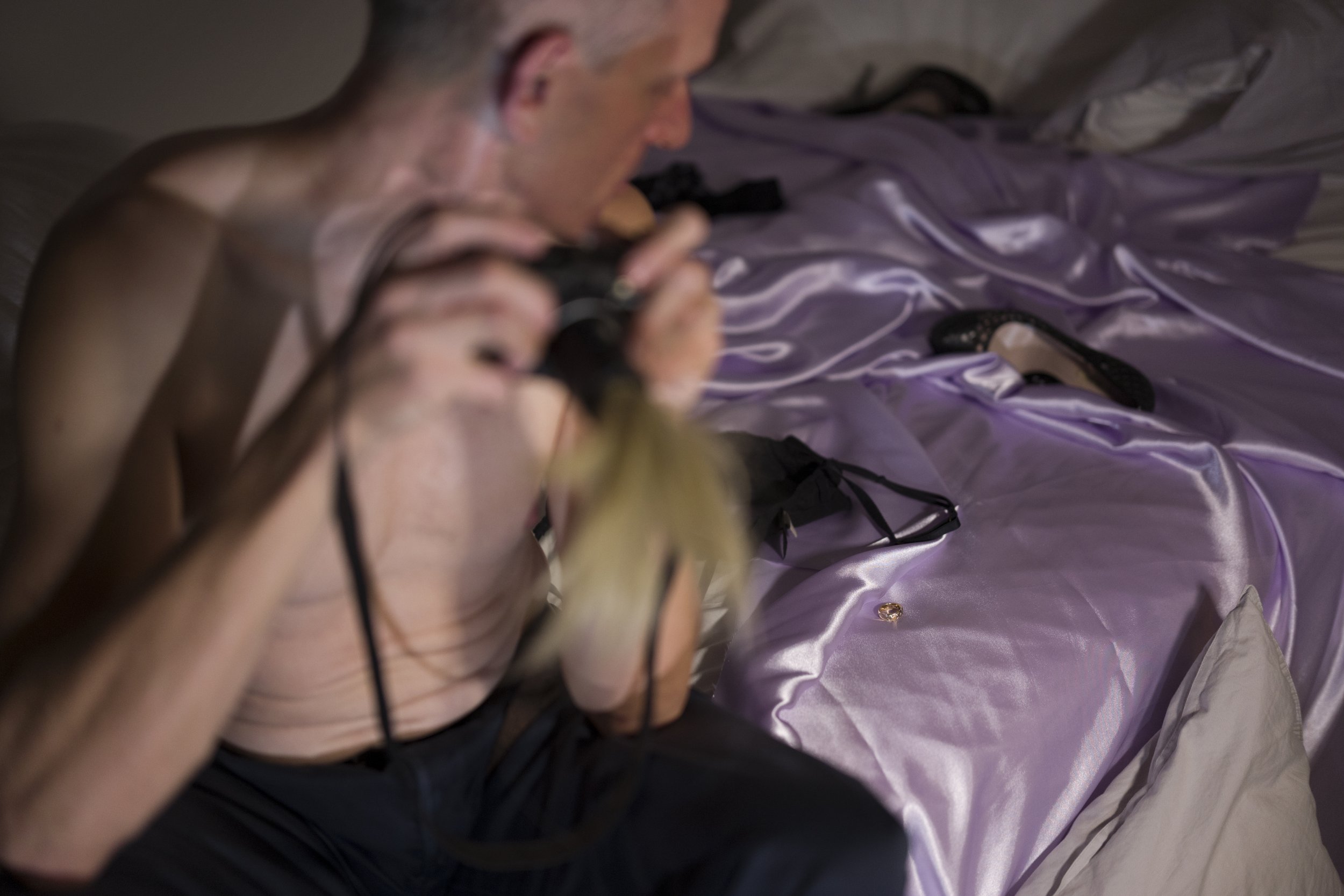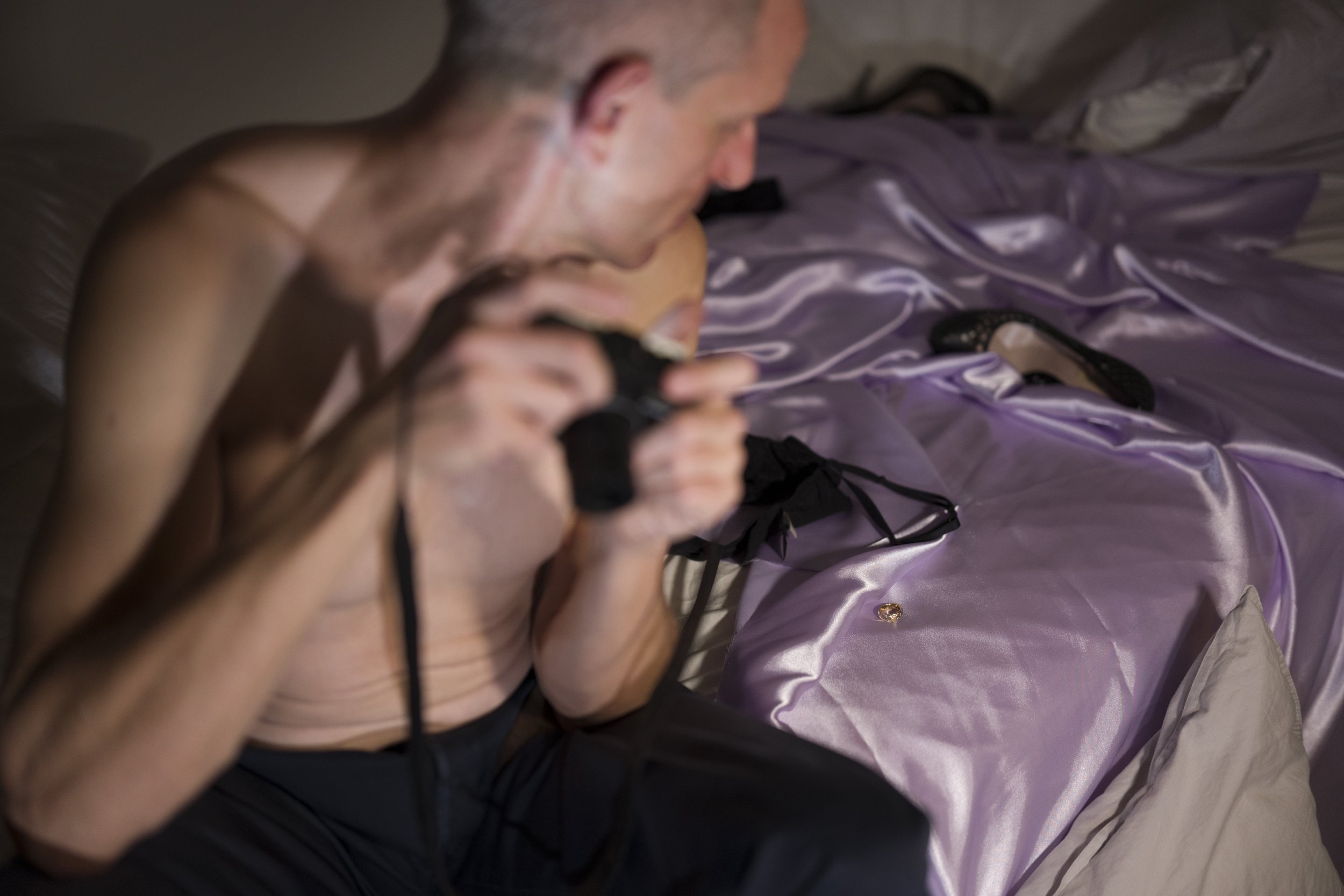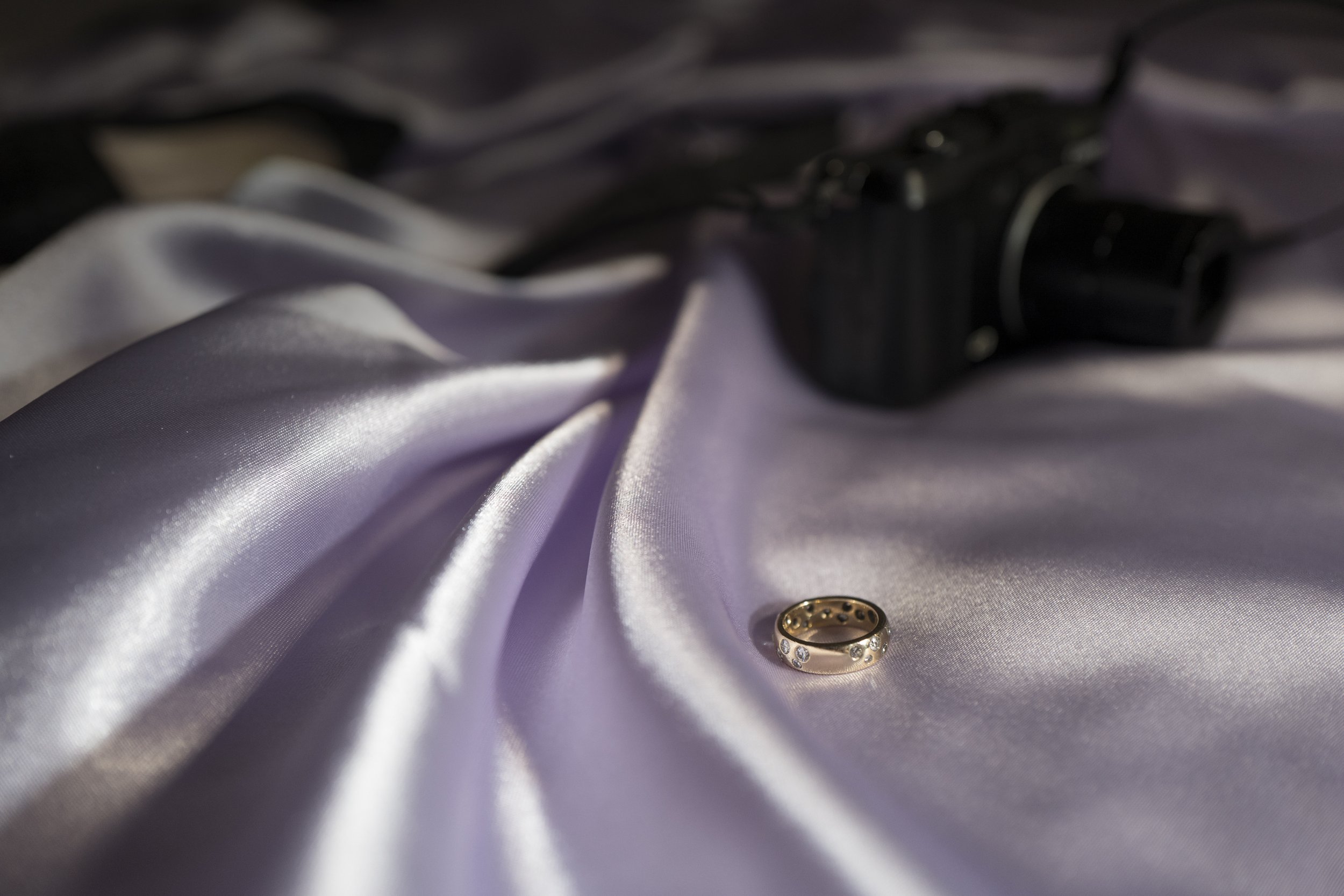HOME

CATALOG DREAMS No.1 - HOME SPECIAL
Catalog Dreams: Do you ever get the urge when out driving late at night to pull up outside a strangers house, stand at their window and steal a look through the curtains inside? Over a billion homes on this planet and in each and every one a unique home movie plays out night after night. What do people do when they’re home alone? What do they wish for? When they sleep, what do they dream of? Catalog Dreams: Four ever-evolving photo-essays. Furtive fantasies. Original life.
WORK IN PROGRESS
Please Note: New interviews will be added below as they are completed.
_____________________________________________
INTRODUCTION
‘A MAUSOLEUM’
Catalog Dreams: On the 27th August 1973 polymath Carlo Mollino died at work in his Turin studio aged 68. Never again would he furtively visit Casa Mollino, the secret apartment he’d been furnishing across town for the past 13 years. Obsessed by death and inspired by the ancient Egyptian tombs of Kha, Mollino’s exquisite tribute to his aesthetic and intellectual self had been seen by few if any people, save for the occasional prostitute he would photograph there alone. Even close friend Carol Rama who lived in the same street was unaware Mollino was her neighbour, albeit if only by day for he never did spend a night there. A home that wasn’t a home in the sense we’d recognise, what was Casa Mollino to Carlo? Order and perfection in a chaotic imperfect world? An adventure playground or a film-set for a ‘connoisseur’ of the female form? Or could it have simply been a childless single man's legacy? A memorial. A mausoleum. Had he always intended it to be the museum it eventually became and if so, why keep it such a closely guarded secret?
‘49 YEARS OF BEING ALONE’
There are few more emotionally loaded words in any language than ‘home'. So what does home mean to us? Is it sanctuary or showroom? Playpen or fortress? Microcosm or republic? Is it a time-machine? A commune or hermits cave? Birthright or unattainable dream? Essential shelter or elaborate lair? Josef Fritzl’s home contained a further home of sorts beneath it. For his desperate captives that basement ‘home’ was their prison and their universe. For him it was more than storage, it was an opportunity to play a pitiless God. For J.D. Salinger it was an escape from the phonies that surrounded him and for reclusive Greta Garbo it was 49 years of being alone cementing mystery, glamour and legend.
‘LAB MICE’
There are few creatures on this planet who don’t have a home of sorts but in our complex human lives home seems to hold a hallowed and yet contradictory place in our hearts. As children we sleep in its protective shadow nightly yet we flee from it as we mature. We holiday as far away from it as possible when we're at leisure yet we yearn for it when we are away anything longer than a short while only to crawl the walls of our tightly packed urban boxes like lab mice when we’re home too long. Once nomadic we carried it with us on our backs into nature in a time before ‘home’ became the ‘ho-tel’ and the 'motor-tel’ that swiftly followed it. Where would Kevin McCallister or the lonely Norman Bates be without the hotel home at the epicentre of their story? Because home comes in all shapes and sizes. Think Howard Hughes reclusive 9 year stay at Vegas's Desert Inn or Coco Chanel’s controversial 34 year residency at the Paris Ritz Carlton. Think the dizzying Caesar’s Palace of Rain Man, Whitney’s trashed Beverly Hilton or Lost in Translation’s beautifully sterile Park Hyatt Tokyo. The hotel is our home from home whether we’re a graduating teen or a Japanese couple renting privacy by the hour, playing discreet host to our more clandestine activities, to our private parties and liaisons, to our shadow lives.
‘TOM NOOK'
Wherever and whatever it is ‘home' is so much more than just a house. Not only is it a space to be ourselves it’s equally a place to rewrite our narratives and assume identities away from the prying eyes of our neighbours and friends and colleagues. Home can be a fiction. It can be a region, a country, the past or even a future. Whole nations have fought wars over a sense of ‘home’ time and time again. To those we force into exile or imprison, the absence of home can be a punishment, a terrible torture. So what’s your home to you? Is it a value, an identity, a life raft atop a sea of chaos or a millstone around your neck? Who’s your 'landlord'; societal expectations, the Branch Davidians or even Tom Nook? If your home’s an extension of your personality, what's yours saying about you? Are you keeping up with the Jones’s or have you left the door on the latch for freaky? What’s yours? Berber tarpaulin or Georgian mansion, Habbo Hotel or realtime hell, sweet escape or life in jail?
‘PAMPAS GRASS’
How do we best explain our beautifully bittersweet and at times magnificently melancholy love affair with ‘home’? We best explain through our stories. So, let’s go find out. Let’s go pay a house call on home in all its diversity. If you like I thought we might travel together? I’m not too sure of the address and no doubt it’ll be late when we finally get there but I’m sure we’ll know it when we see it. Look out for pampas grass or even a sign that says HOME. Listen out for the sound of car keys in a bowl or the rhythmic nocturnal ‘CHANK!’ of pickaxe breaking patio slab and together let’s go ’through the keyhole’ and meet just whoever it is that awaits us on the other side. Grab your coat! We’d better hurry… If a century of movie intrigue has taught us anything about home it’s that all too often when you’re a late night visitor calling at a strangers door you may just find that your ‘host’ has been expecting you…
>>
No.16 - WAI-LING
Above - Jacket / Shoes / Bag: vintage Gucci - Trousers: vintage See by Chloe - Glasses: vintage Givenchy - March 2023.
‘PICK UP THE BONES’
Wai-Ling: “Every single home in Hong Kong has an altar where you burn your sticks and have your statues, to remember the dead. We do it at Bi-San. When somebody dies in Hong Kong they chop you up and put you in a pot for seven years. There’s a ritual, it translates as ‘pick up the bones’. Because the flesh has gone - it’s just the bones left. We all go up into the hills and visit the graves. We take pigs, suckling pig, chicken, fruit, cakes, clothes made of paper, money, firecrackers. You burn all the paper. Set off the crackers. Burn the money. They take your bones out and transfer them to a smaller pot. Space saving. Marie Kondo would approve. Then we take the food back with us and eat it. There's a feast.”
No.15 - JONATHAN
Above - Photographed November 2018.
‘WEIRDO. FREAK. FAGGOT.’
Jonathan: “Putting yourself out there takes a certain mindset. As a teenager growing up in the middle of mid 80’s middle England I can well remember the small-minded bigotry. ‘Weirdo’. ‘Freak’. ‘Faggot’. I think I thrived on it. I’d wear vintage full length fur, Red Or Dead spoon shoes with white naval flares, flamboyant jewellery, anything to separate myself from them all the more. Anything to provoke them. Ironically everything they hated about me was the very thing, accessorised with a leopard print hat and a love bite, that saw me escape straight into the art school of my dreams.”
No.14 - WAI-LING
Above - Catsuit: Freepeople - Shoes: Rag & Co. - Hat: Watko / Decathlon - April 2023.
‘LIMBO’
Wai-Ling: "I’d have loved it if as a kid I’d had the opportunity to do gymnastics or dancing. Other kids were off doing after-school clubs but I didn’t. That wasn’t the kind of thing our family did. My Mum and Dad worked all the time. My Mum’s English is really not great and she wouldn’t have known that these things even existed - and knowing how busy they were, I wouldn’t have asked. So I was oblivious. But if I could have my time again I’d do it. Gymnastics or martial arts I think. Martial arts partly so I could protect myself. Because I’m aware of my vulnerability - as a girl and especially as a Chinese girl in England.”
No.13 - JONATHAN
Above - Ghillie suit & ski mask: Tokyu Hands - January 2018.
‘LATE NIGHT POLKAS’
Jonathan: “Growing up in the 1970’s and 80’s war was inescapable. Culturally I don’t think WWII really ended until 1977 when Star Wars came along. It wasn’t just Nazi’s and the war in Vietnam that had a big impact on me, it was the Cold War and the threat of nuclear attack. As romantic as that whole East vs West thing was back then; all the intrigue and mystery and the curious Eastern Bloc radio stations you’d chance across broadcasting late night polkas and disinformation, I often wonder about the psychological impact that nuclear terror had on us as children growing up. Many people my age who were kids then went to sleep nightly with the same bad dream of trying to outrun a missile strike. Just as children elsewhere do now.”
“I’ve always dreamed of escape, of getting away from society and staying hidden. One of my most comforting trains of thought that I return to when drifting off to sleep is of lying in a shallow trench dug into forest trail, covered over with foliage with a rifle by my side. I imagine myself quietly lying hidden there for days, quite happy to be concealed in the warm ground, listening to the sounds of the forest and very occasionally shooting people in the arse as they walk over me.”
No.12 - JONATHAN
Above - Body armour: Hallman - Helmet: EVS - Gloves: Adidas - August 2019.
‘PLASTIC SAMURAI’
Jonathan: “That side of the family come from Nottinghamshire. Centuries of us going right back to when it was just forest. They were mercenaries. The name ‘Hardstaff’ allegedly comes from the long stick they’d carry and hit people with. It’s odd but I do feel very peaceful and content in forests. It does feel like that’s my habitat. Is it possible that the environment you originate from can speak to future generations? Do we carry some collective memory with us?”
“My grandfather rode early motocross back in the 1920’s and 30’s - I still have his boots - they’re tiny. I rode BMX badly as a teen and then later got into road bikes until one crash too many. The body protector is vintage 80’s US import armour - all BMX Bandits - very plastic samurai.”
No.11 - WAI-LING
Above - Bag: Chanel - Rings: - Vivienne Westwood / Gucci - March 2023.
‘THE DUKES AND DUCHESSES OF HONG KONG’
Wai-Ling: “It took ten years to get my body back after childbirth. My cravings for indulgent food are so strong. My Dad used to come back from work in the middle of the night with food from Chinatown. Wake us up, have a takeaway and then go back to bed. Not a lot of families do that. It’s hard fighting those impulses. People everywhere find it hard. But it’s also a Chinese thing. Chinese people love food. Maybe because they’ve been accustomed to being so hungry.”
“Now San Tin is a historical village. It’s a heritage site. We’re the Dukes and Duchesses of Hong Kong (laughing). But back then my parents had nothing when they were kids. My Mum would get a boiled egg for her birthday. Because she was poor. My Dad was really poor. No one to bring him up. The neighbours in the village raised him. He just ran around and did whatever. He didn’t know any better. The fact that he didn’t have any parents was probably why he thought he'd go to the UK. Nothing to hold him back. That’s why he likes nice things now - shoes, clothes, food - because he didn’t have any of that back then. Like Elvis Presley was with food. Because he was so poor. He didn’t have those things. Indulging himself now because when he was a child he couldn’t.”
“They came in the late 50’s. My Dad first. Then my Mum followed. They didn’t know anyone in the UK. They had no money. Came by ship. Took a month. Chinatown didn’t exist then. That part of Soho was rundown - theatrical shops, music shops, wig makers. It was cheap to live there. The Chinese community settled in the East End first but they got run out.”
“He got a job in a kitchen. He did that for a while before he started his business. That’s when Chinatown started to pop up. He was probably instrumental in helping to set up Chinatown. Chinese people lived there then. When it was cheap.”
No.10 - JOSEPHINE & TULLIO
Above - Josephine wears: Jacket / Skirt / Earrings: Vintage - Hat: Vintage Frederick Fox - Sunglasses: Vintage Gucci - Scarf: Blue Designs Atelier - Shoes: Terry de Havilland - Tullio wears: Suit: Vintage - Shirt: Mendoza - Socks: Pantherella - Shoes: Vintage Gucci - October 2023.
‘PARADISE - SUN - FREEDOM - HEAVEN - SWEETNESS - DIFFERENCE’
Catalog Dreams: “So what was it like growing up under communism in Poland?”
Josephine: “People were taken to prison for different views, you couldn’t walk freely on the streets because of the curfew, you couldn’t buy anything, you were thinking about surviving. Back then a banana was a luxury item (laughing). When I (moved to London and) used to eat a banana I was feeling that time in the taste. A banana had associations of a luxury item. At that time (communist Poland) you could only get it for Christmas, just a few pieces.”
Catalog Dreams: “So what did it taste like?”
Josephine: “A banana tasted like, like... paradise, sun, freedom, heaven, sweetness, difference, a different country basically. It had travelled to us from Africa and we couldn’t really travel then, so for me a banana is a symbol. Of freedom. Because my life was restricted. My opportunities were restricted. My education, my job. If I was growing up in England for example I’d have been going to an art school. There was no freedom basically.”
No.9 - WAI-LING
Above - Dress: Bella Freud - Glasses: Miu Miu - Pendant: Sarah Jane Wilde - March 2023.
‘YELLOW’
Wai-Ling: “YELLOW! - Am I yellow?! There’s a sensitivity around the word ‘yellow’ for a lot of Chinese people. Even my Mum knows Chinese people are called ‘yellow' and she doesn't speak English. I really love the colour yellow but its used as a slur, not a description. So I’m owning it. Sure, I’ll be yellow! Fuck you racists. I’m yellow now.”
“I would never call myself English. Because I don’t look it and I don’t feel it. I guess I feel I can’t be. BBC - British born Chinese. Chinglish? No. I don’t feel like I belong anywhere, not Hong Kong, not here, but culturally I'm Chinese. Friends and family and a home are your belonging, not a national identity or nationalism. I love London but I don’t belong anywhere, I just am, and that’s alright."
No.8 - JONATHAN
Above - Jacket: Boneville - Hat: Vintage Showroom - November 2018.
‘NEFARIOUS PURPOSES’
Jonathan: “The vaults under our apartment in Sussex Square were the wine and cheese stores for what was once a great house. All the houses in the square had them. The value of the wine kept there was far greater than the houses above so only the housekeeper had a key and the only way down to them was through her basement parlour. But time’s passed. Now many have been converted into offices or dressing rooms, saunas or used for more nefarious purposes. Which of course is SO Brighton.”
No.7 - WAI-LING
Above - Swimsuit: Oseree - Helmet: Pro-Tec - Bag: Chanel - Shoes - Vivienne Westwood - March 2023.
‘WHITE ANGER AND HATE’
Wai-Ling: “Strength? I don’t want to be vulnerable. I’m the youngest and a girl yet I’m protective of all of my brothers. I’m no matriarch but I do feel like I have to look after everybody. I’m trying not to. I’m disgusted by women who act weak for men. It’s so bad for us. When I go out I want to pay my way. All this sexism is a defining thing for me. It’s all been about the boys. But I've been the beneficiary as well - of being the youngest and a girl. It’s complicated.”
“Growing up in 70’s and 80’s Britain was scary. When my white friends wanted to go places like the Old Kent Road I didn’t want to go. I didn’t want to say why. But… these places were notorious for racism. Yes I had stuff said to me. But I think it’s just as racist now. My children have had it much more at school. Maybe not so much in the street.”
“I worried about it all the time. Things you wouldn’t perceive as racist I did. As a small kid white ska was a big thing in the UK and a lot of the bands, and punk bands, even the Sex Pistols, as much as I was mostly wrong about it to me at the time they all seemed like they’d be racists. All that white anger and hate scared me. It’s had an impact. Because you know you don’t fit in. Because you know you don’t belong here. So you have to present as tough and over time, if you’re not careful I guess that hardness can become second-nature, can become you."
No.6 - JONATHAN
Above - Jeans: Levis - Hat: Stetson - Gloves: Paul Smith - Boots: Thomas Bird - August 2019.
‘DIRK BENEDICT’
Jonathan: "As a kid I was in awe of Dirk Benedict, Faceman from The A-Team. The handsome Montana clothes horse remains a style hero to this day, not least in stetson and denim.”
“Cowboy’s a look burnt indelibly into my generation’s consciousness. Redford in Butch Cassidy & the Sundance Kid, Yul Bryner in Westworld. Steve McQueen in The Magnificent Seven. Eastwood for sure in anything Western. The Marlboro man and later Tom of Finland. Guns, jeans and great hats. At night I’d lie in the dark playing the Morricone soundtracks to Leone’s masterpieces on my walkman imagining ‘the man with no name’s’ adventures scene by scene. I’ve almost always owned cowboy hats. The Stetson’s shoot loot. The sideboard was a wedding present to my parents.”
No.5 - WAI-LING
Above - Pendant: Sarah Jane Wilde - November 2022.
‘IT’S A BATTLE’
Wai-Ling: “I love swimsuits, trouser suits, especially jumpsuits. They were massive in the 70’s and 80’s. Very Charlies Angels! Loved that. A lot of it is nostalgia about the things I used to watch at home on television and some of it is that when I was 17, 16, 15, I was really overweight and I felt like I couldn’t wear anything I liked so everything I wore was really baggy and it wasn’t until I hit 18 that I lost weight and felt like I could wear things. It’s a battle I’m still fighting. So in a way I’m celebrating, wearing things that I couldn’t ever have. Yes - I’m still celebrating.”
No.4 - JONATHAN
Above - Custom flower suit: Verity Hawkes - August 2018.
‘CURIOUS APES’
Jonathan: “I love what happens when you take disparate elements and force them together creating new stories and new identities. Those elements can be as elaborate as my custom flower suit by costume designer Verity Hawkes in a bath or as deceptively simple as a ring and a camera. Either way at least for the briefest moment we’re seduced into playing detective to solve the riddle and come up with the plotline. What are we looking at? What’s happening here? Why was it made at all? We’re compelled to play because we’re curious apes - it’s in our nature to love stories - and when we look at ambiguous images we see what we want to see. In our heads we create the before and the after. In our heads we shoot the sequence - but we shoot it our way. I think I’m only now realising that ambiguity is the joy in still images and why they’re still so relevant. Film tells you what to think. Stills invite you in to play.”
No.3 - JONATHAN
Above - Photographed November 2018.
‘NEW GODS’
Jonathan: “As a child I was forbidden to watch commercial television. So I’d sneak downstairs and steal late night glimpses of Chanel commercials, of Grace Jones advertising Citroen and all that branded 80’s glamour my parents were watching when I was asleep. The imagery seared itself into my imagination. I shared the fantasy. I was transported. I’d found new Gods. I’m mangling his words I’m sure but I’ve always liked that Karl Lagerfeld line: ‘If you want reality, go take a bus.’ Fiction over fact, every time. With fiction there’s always an escape.”
No.2 - JONATHAN
Above - Trousers: APC - Hat: Vintage Showroom - Pendant: Sarah Jane Wilde - August 2019.
‘FAN OF CLICHE’
Jonathan: “When it comes to dressing up, and I love dressing up, then I’m an unashamed fan of cliche. ‘Soldier’. ‘Cop’. ‘Catalogue model’. ‘Construction worker’ - I used to club wearing a builders tool belt not because I needed somewhere to put my walkman and cigarettes but because it looked so good. ‘Sailor’ too. Yes it all sounds a bit Village People and yes it’s surely about masculinity but the question is less ‘why would I want to dress as a sailor?’ and more ‘when don’t I want to dress as a sailor?’ I like the cartoon Popeye vibe to it all. I like that I don’t have to take myself so seriously to be good at what I do. I think if you have to demand respect from people through your appearance or your behaviour, well, something’s not right with you…
The hat is genuine US Navy issue, the black velvet jogging pants are exactly the kind of black velvet jogging pants that a 50 year old grey haired man shouldn’t be wearing and the pendant is borrowed Sarah Jane Wilde, exquisite jewellery designer and muse to the great.”
No.1 - JONATHAN
Above - Shoe: Church’s - August 2019.
WORK IN PROGRESS
Please Note: New interviews will be added above as they are completed.
_____________________________________________
CONCLUSION
‘KRYPTONITE’
Catalog Dreams: In 1977 photographer Chauncey Hare published ‘Interior America’, a moving body of work he'd shot traversing Ohio and Pennsylvania with his camera and an ironic eye, calling door to door asking homeowners if he could photograph them at home. Something about these people in their boxes, often oppressed by their situation in life or their environment, fascinated him. With each house call Hare would find with great regularity that the room that needed photographing most was most often the last room the householder wanted him to see. Why? Well, if the home is a projection, a representation of how we’d like to be perceived by the world then that one room is its inner truth, kryptonite to the mirage that we homeowners hope to conjure.
‘CHAOS - DERELICTION - EMBARRASSMENT - REJECTION - SHAME’
So what’s your home saying about you? Because like a haunted house with every door and shutter and window slamming over and over back and forth our homes are for sure trying to tell us (and each other) something. All that faux Grecian architectural detailing and Stepford net curtains, all those modish Crittall windows and pathologically manicured Wisteria Lane lawns are sure as hell saying something about us, literally shouting our neurotic fear of losing the precious permanence we’ve achieved. Hare was simply looking for the truth and in that last room his camera would invariably find it sheltering precariously amidst drywall, timber and tile, revealing everything the homeowner was scared of - chaos - dereliction - embarrassment - rejection - shame. Our homes project our image out into the world, sure, but equally they remain a mirror to who we really are and inevitably, as Chauncey would regularly find, betray us. For good and bad we are, it seems, our homes and they are an eerily accurate manifestation of our state of mind.
‘LOVE LETTERS’
I first started shooting Catalog Dreams aimlessly, making images of myself at home because I felt like I couldn’t do so anywhere else, because socially and professionally I felt like I shouldn’t at all. In doing so the camera became my therapist. Just recently I read somewhere that most artists have to produce a work of art in order to feel better. In my experience there’s great truth in that and I guess that’s what we'd been doing all that time, my camera and I. Attempting to feel better. So what did we discover? I certainly found a simple forum for exploring my own preoccupations, but much more interestingly in ‘home' I found a forum for exploring the preoccupations of others. I found a game I’d like to play for a very long time, shooting photographic love letters to far more interesting individuals brave and generous enough to let you and I enter their sanctuaries and see their unfiltered individuality and truth.
’INSIDIOUS’
It took a certain amount of deliberation before I felt comfortable exposing my ‘inner life’ to anyone who might be interested, but the effect was immediately liberating. Opening up my doors both literally and psychologically liberated me from the fearful expectations and insidious quiet peer pressure of others and in turn relieved me of my own constraints. I rediscovered something that I’d long forgotten; I don’t fear disapproval, I thrive on it. Creatively the effect has been rejuvenating. It may sound hyperbolic but I’ve never felt more like myself. I’ve never felt more real and more importantly I’ve witnessed the same diminishment of shame in those that I’ve photographed and interviewed.
‘SKID ROW’
What is ‘home’ to us? Clearly there’s no single answer. We’ve run the gamut. Home as an oppressor. Home as a cultural sanctuary. Home as an identity. Home as a danger. Home as a place to hate, as a springboard to ambition and escape. Home as a millstone - a fantasy - as heritage - as myth and mystery and at its very best, as a place to dream and play. In conducting these interviews the one thing that became very apparent is that home is, if we’re very lucky and if we’re doing it right, the one place where we can comfortably be ourselves. Our true selves. Where we can let the mask slip or if we prefer put an entirely different mask on. It may be no great epiphany but it makes sense that when it’s missing from our lives we really feel its absence. We are incomplete. Whether it’s a winnebago, prefab, Case Study masterpiece or wheelless sedan on Skid Row, home is our most basic human need.
’COLUMBO’
Well we’ve had a tour of the house and we’ve seen the garden and come full circle and now it’s surely time for us to leave. But just before we do I find myself like Columbo wondering ‘just one more thing’. I’m left wondering which room at Casa Mollino, Carlo Mollino’s lavish secret apartment, Chauncey Hare would have most wanted to photograph? I imagine the answer is none of them. Casa Mollino was a secret, not a home. Mollino shot thousands of photographs of Turin street girls at his other properties but only a few times at Casa Mollino. My guess is that they, like his family and friends, were never made aware of let alone welcomed at beautifully sterile Casa Mollino because they would sully his dream. Because this ‘home’ was in fact an unreal fantasy of how he wished he could, but no doubt knew he wouldn’t ever, live. It was a set for just one actor and an audience of none.
‘SPINNING FURIOUSLY’
In my humble opinion a home’s not the materials it’s built from or its financial value, it’s the laughter its rafters have heard. It’s the lovemaking its walls have endured. It’s the arguments and the reconciliations, the parties and tragedies it's played host to. The generosity of intimacy and sharing is its fabric, not brick and mortar. There is no permanence. We just step inside out of the rain for a while until it’s our time to move on and, just like Hermit Crabs, a new occupant takes a shine to our shelter and moves in. Mollino died and his cherished secret in a fleeting moment meant nothing more to him, instantly no longer a secret. But if he did learn of the guided tours and photoshoots that strangers regularly conduct now at his beloved Casa Mollino I like to imagine him spinning furiously with all that characteristic restless energy in his current home, the family tomb designed by his engineer father at the cemetery of Voghera.
‘SHORT’
Though indistinct, somewhere in the process of shooting other peoples stories at home I started to recognise many of my own questions and personal preoccupations and even a few answers distilled down into all these images and interviews; the big questions I’ve also been asking myself: Who are we really? What’s our place in the world? What’s our true purpose? What really makes life worth living? Perhaps more than anything, if life really is so short and impermanent, why cut that grass? Why paint that door? And perhaps most of all... ‘why be dull?’
END
This Catalog Dreams special was created entirely in-camera with no AI / CGI. All images have been colour graded in Photoshop and / or Lightroom.
Photography: Johnny Hardstaff 2017 - 2024 - Styling: Catalog Dreams & all interviewees 2017 - 2024 - Text: Catalog Dreams 2023 / 2024
With thanks to Yumi Yoshinaga & Ben Webster @ Leica UK / Alex Marden @ Art Department for her eyes and mind and generosity of spirit / Verity White / Jonathan Lethem for his continued inspiration / Sarah Jane Wilde for the introduction to Leica / Josephine & Tullio & not least and probably most of all, Wai-Ling.
Creative Director: Johnny Hardstaff
Supported by The Jonathan Foundation - 459 Dirello Street. San Francisco. USA.
‘Supporting Jonathans worldwide since 1970.’
All photographs, films and text appearing on the Johnny Hardstaff web site are copyrighted and protected under international copyright laws. The images, image sequences, moving image files and text may not be reproduced in any form, stored, or manipulated without prior written permission from Johnny Hardstaff and / or the copyright holder(s).
Copyright © January 2024 Johnny Hardstaff

